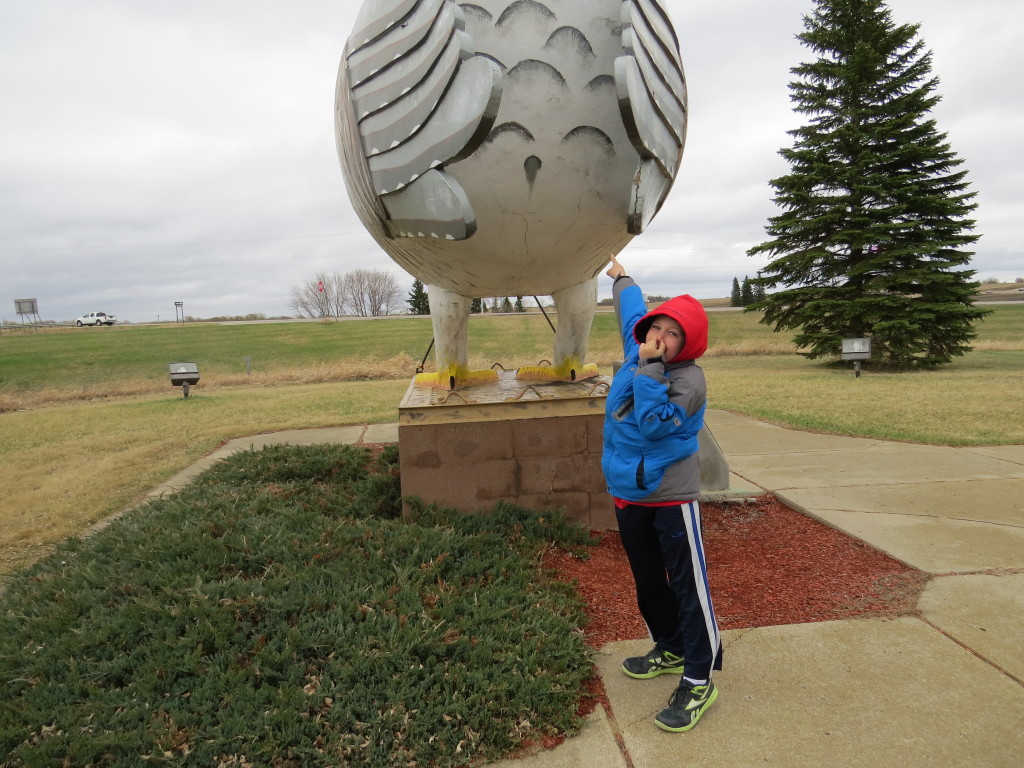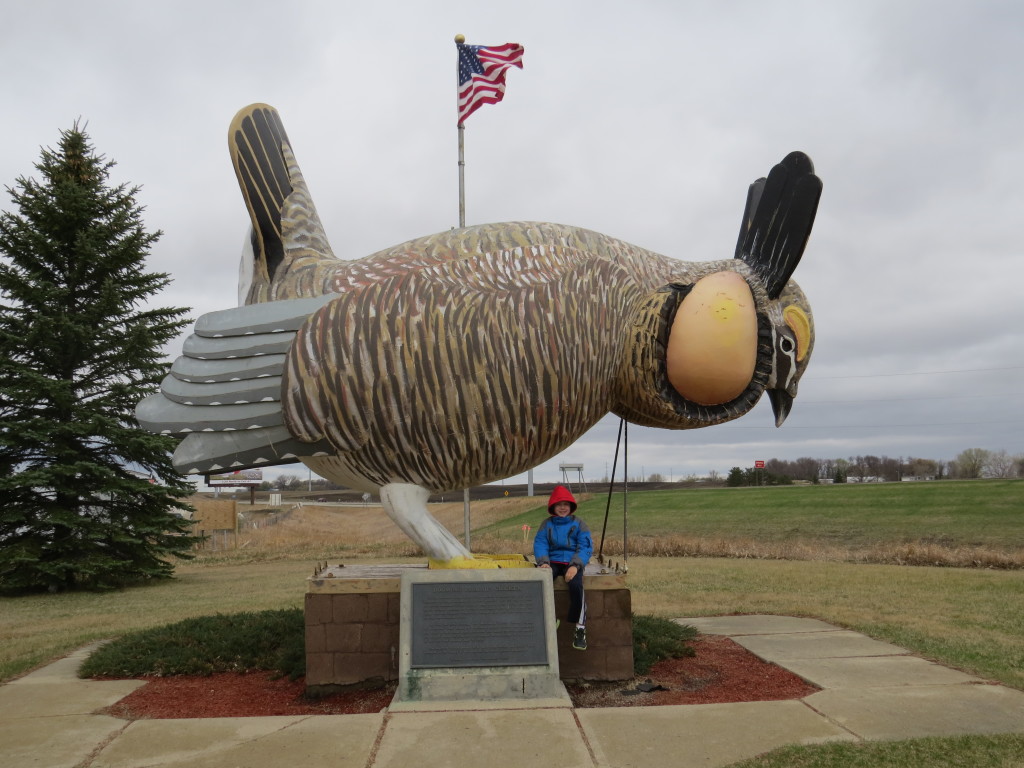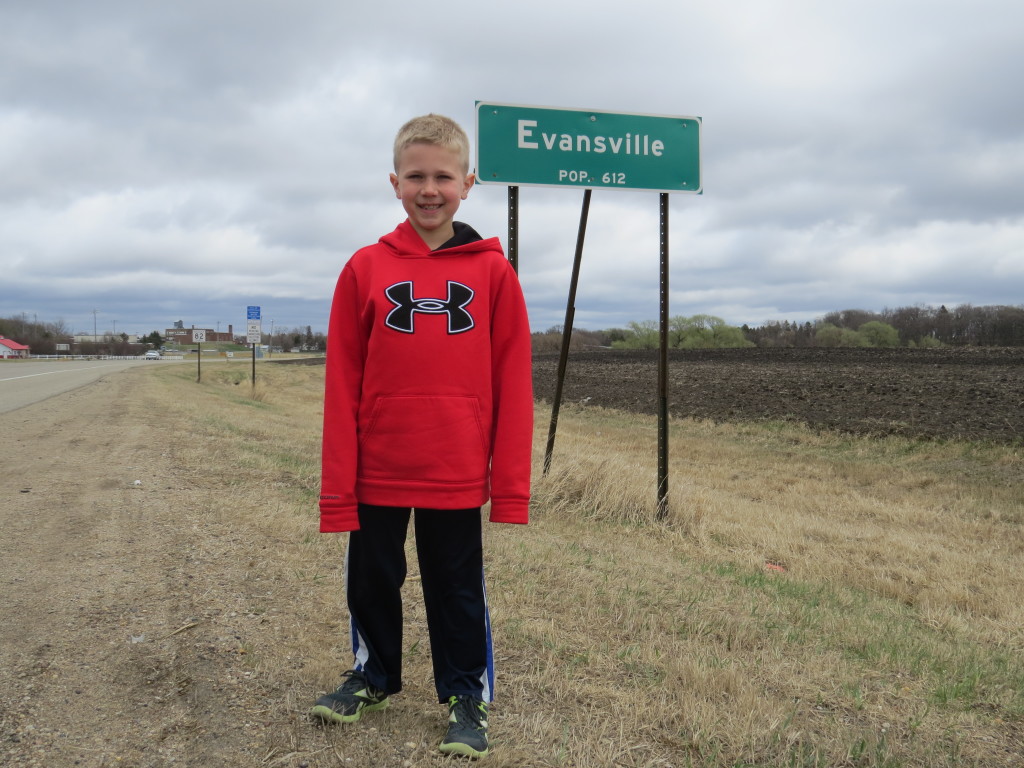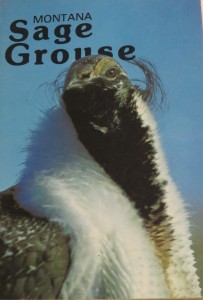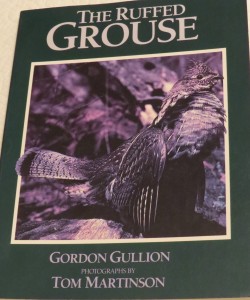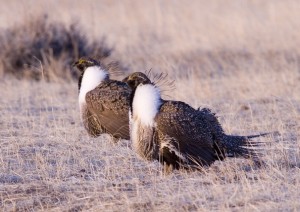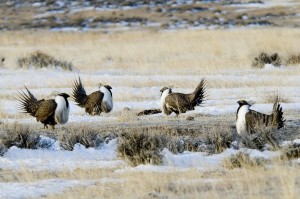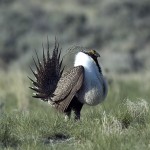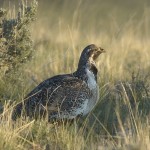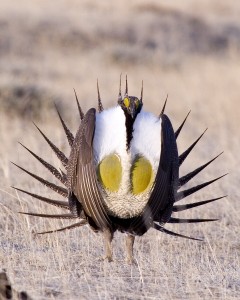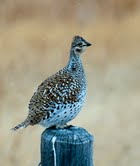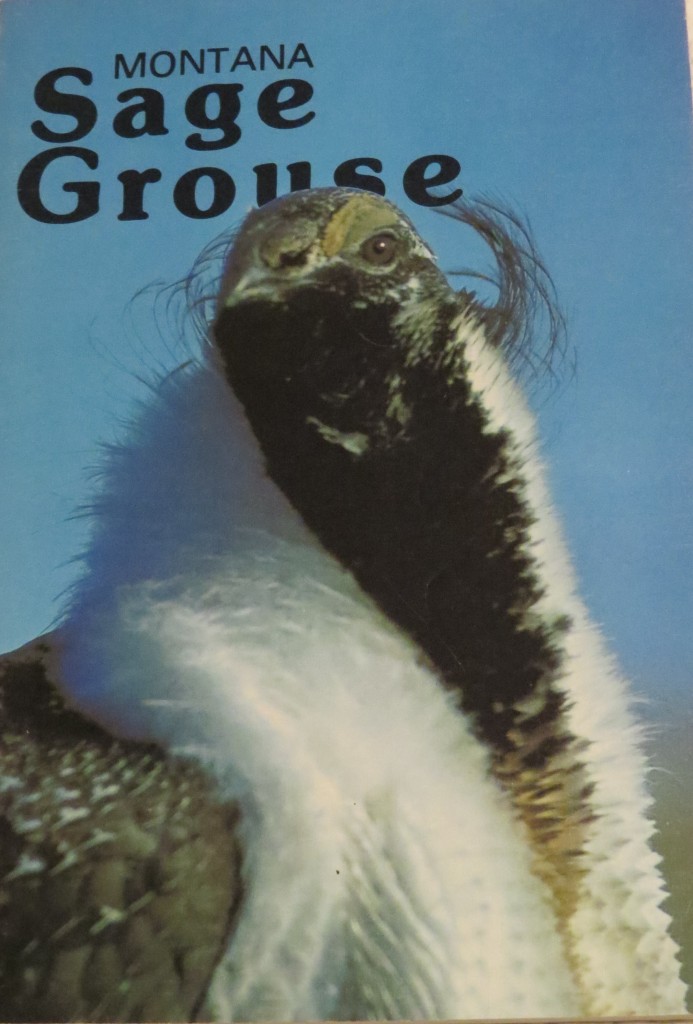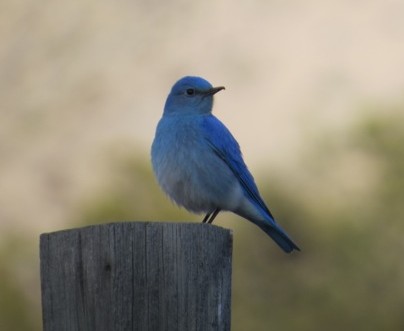It is once again that time of year when bird bloggers the world over parade the best, and sometimes worst, of their year of birding. I am no exception to this. Cliche? Yes. Fun? Definitely. If you are already turned off, perhaps you can make it interesting by trying to guess any or all of the birds in my Top 10.
While you mull that over, I must mention that 2015 was very different from 2014. If 2014 could be summed up in one word, it would be ‘serendipity.’ I had so much dumb luck with my own finds and with other birders’ finds that I was constantly turning up or chasing something cool. 2015, on the other hand could be known as ‘intentionality.’ I did a lot of focused birding for very specific targets that required a lot of planning. With that said, there was, as there always is in birding, lucky encounters. But overall, like Mr. Noah Strycker himself, it is safe to say that this was and will be my best year of birding.
Before we get into the Top 10, here are a couple of superlatives.
Most Expensive Bird
Far and away this honor goes to the Piping Plover. Yes, I spent more on other trips, but when you break down the cost of those trips per lifer, none can compare to the cost of adding Piping Plover to my list. In fact, Arizona with its abundance of lifers becomes dirt cheap if you think about it from a cost per bird perspective. But the Plover required hiring a legitimate sea captain. Justified loosely as a Father’s Day present and a boat ride for the kids, was it worth it to see nesting, endangered Piping Plovers from a distance on a rocking boat?
Yes.
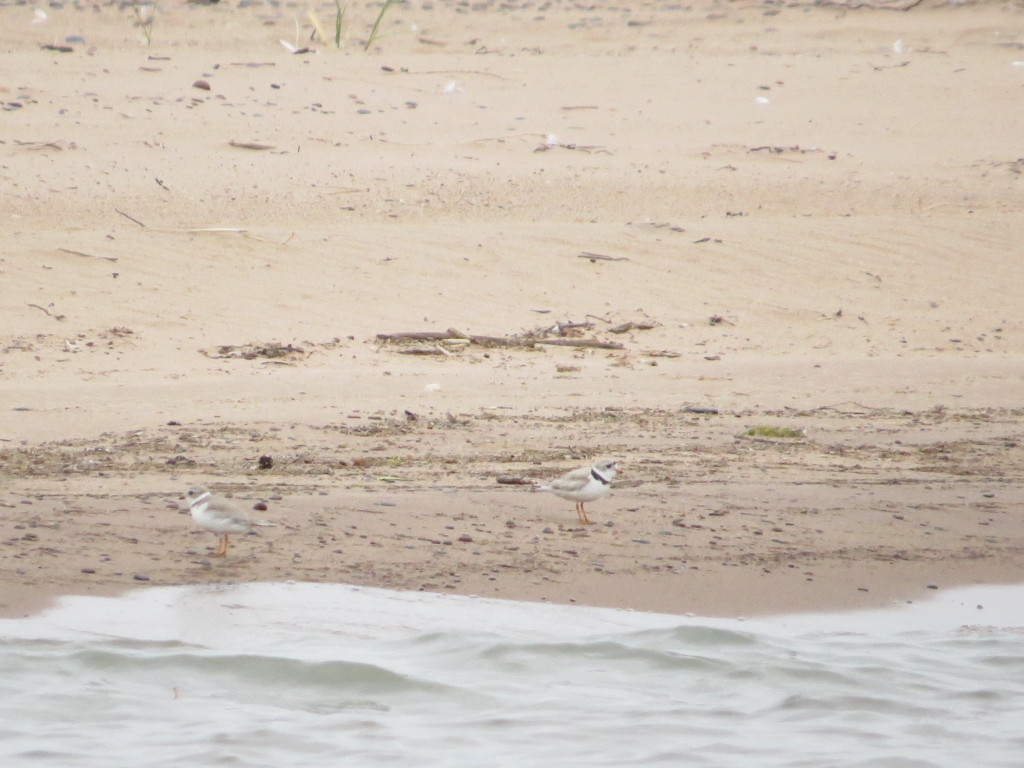
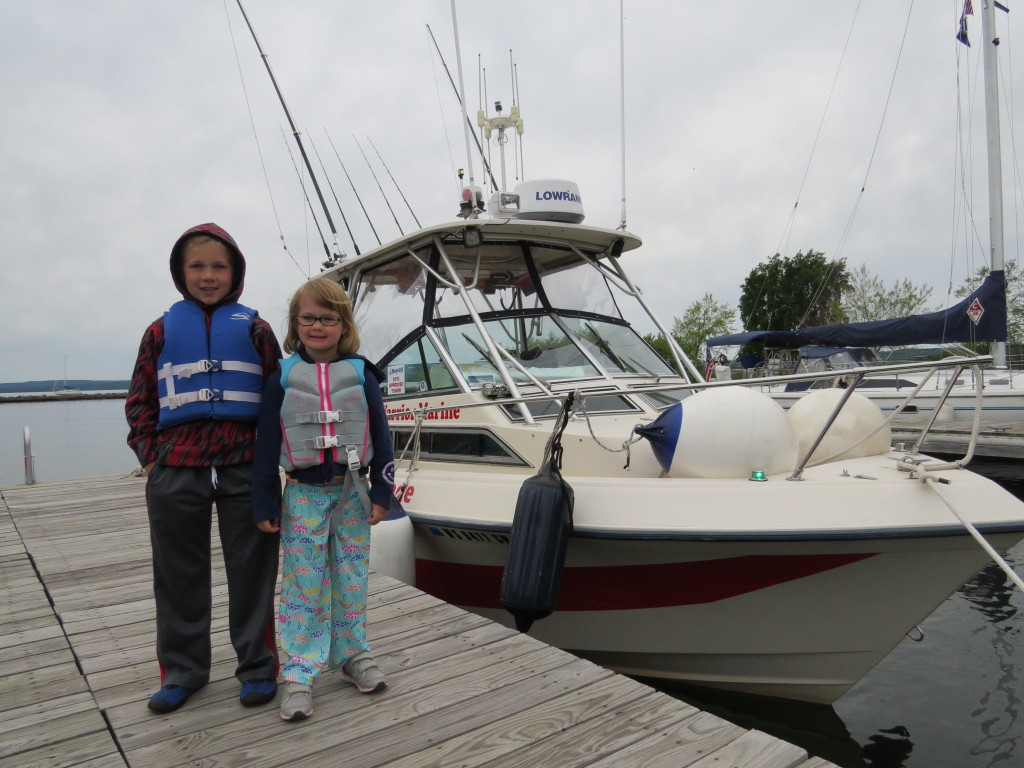
Biggest Miss
Red-headed Woodpecker. I couldn’t find one at all when I literally had dozens the year before. This is a bird you simply cannot see enough of. I look forward to redeeming my failure in 2016.
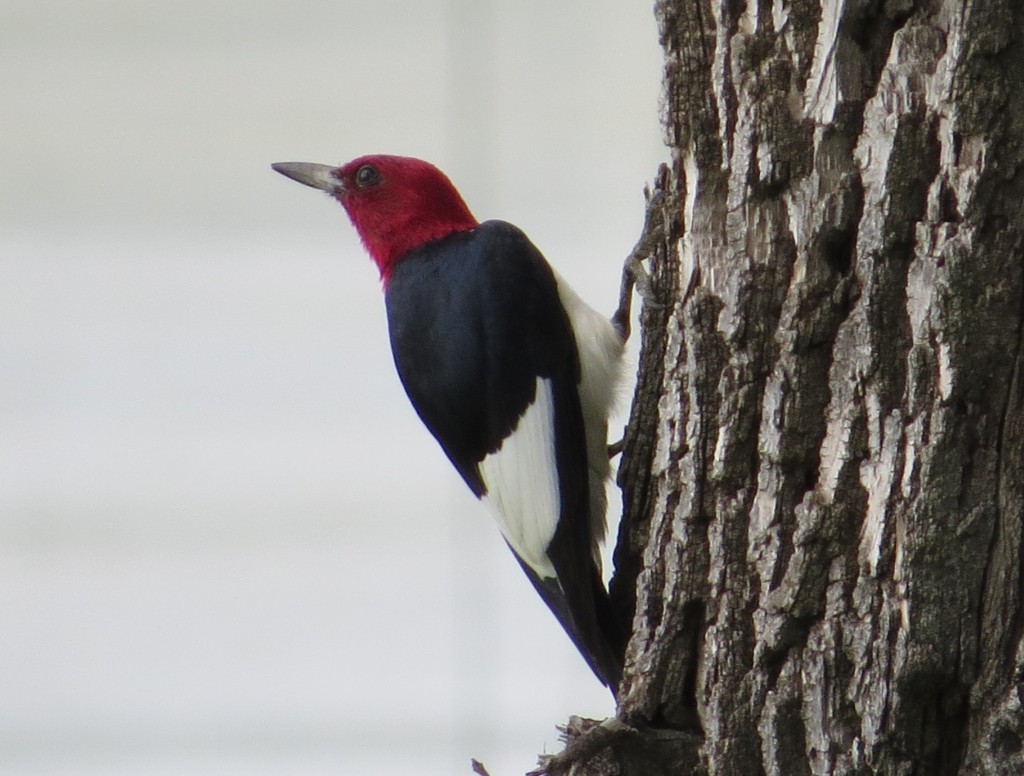
Biggest Shout-out to a Reader
This goes to Laura Segala for her incredible Yellow-crowned Night-Heron yard-bird which so many of us got to add to our life lists this year.
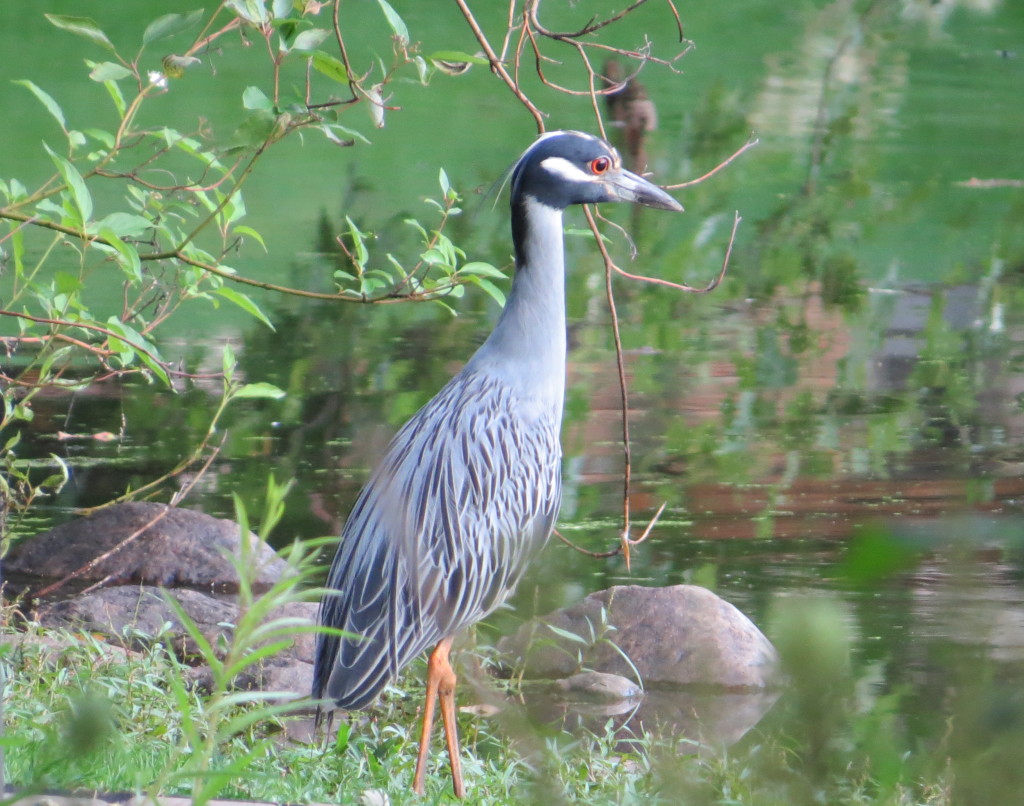
Most Famous Birding Companion
Bob Janssen.
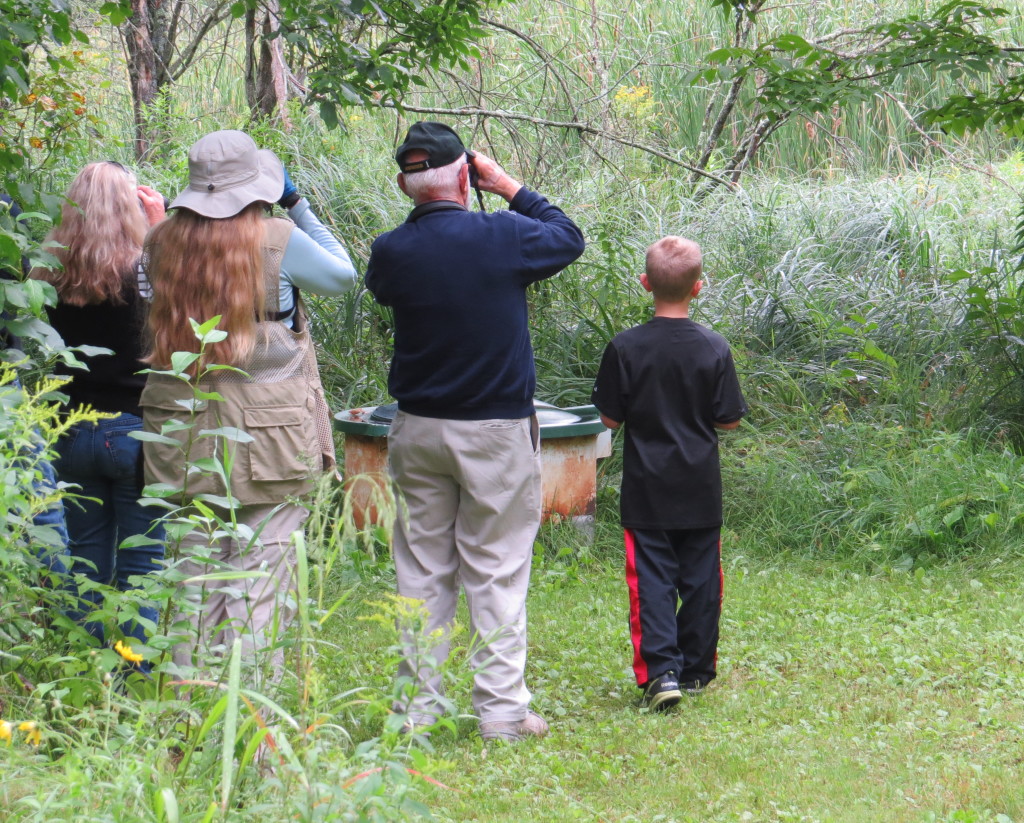
Twice. And we even got to help him relocate Andy Nyhus’s Wood Thrush for a new Kandiyohi County bird for him.
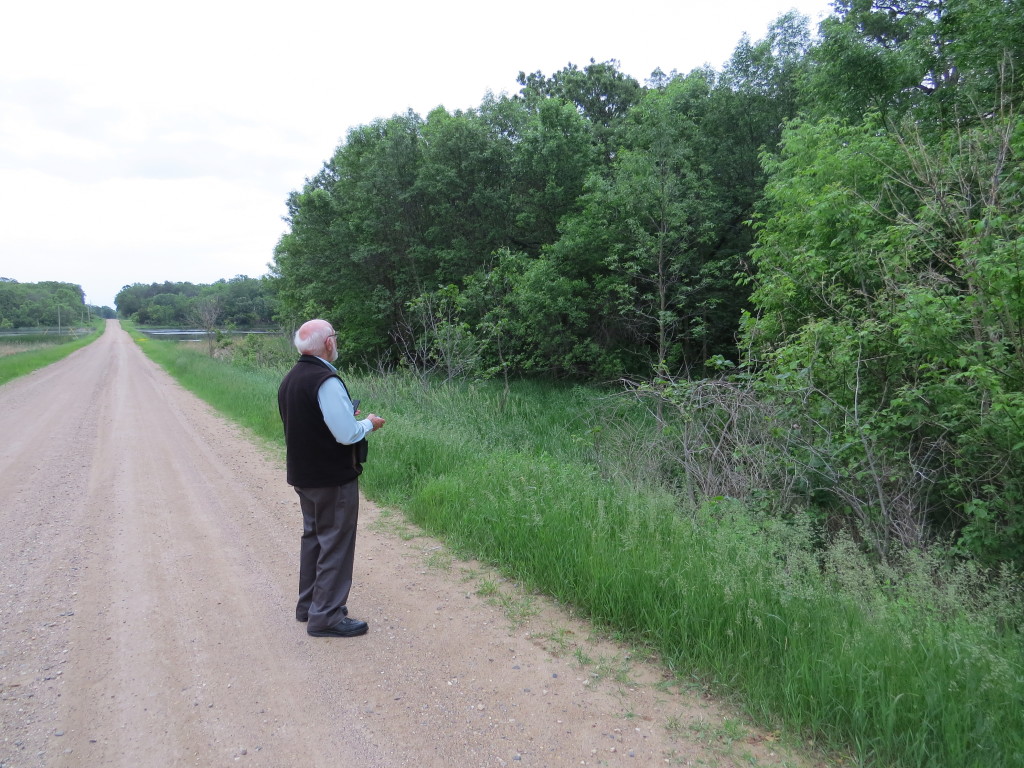
Bob Janssen at the site of his latest county bird, a Kandiyohi County Wood Thrush
Best Redemption on a Bird
Greater Roadrunner. How did we miss it in AZ in 2014? How did Evan repeatedly just miss it in 2015 before finally getting it?
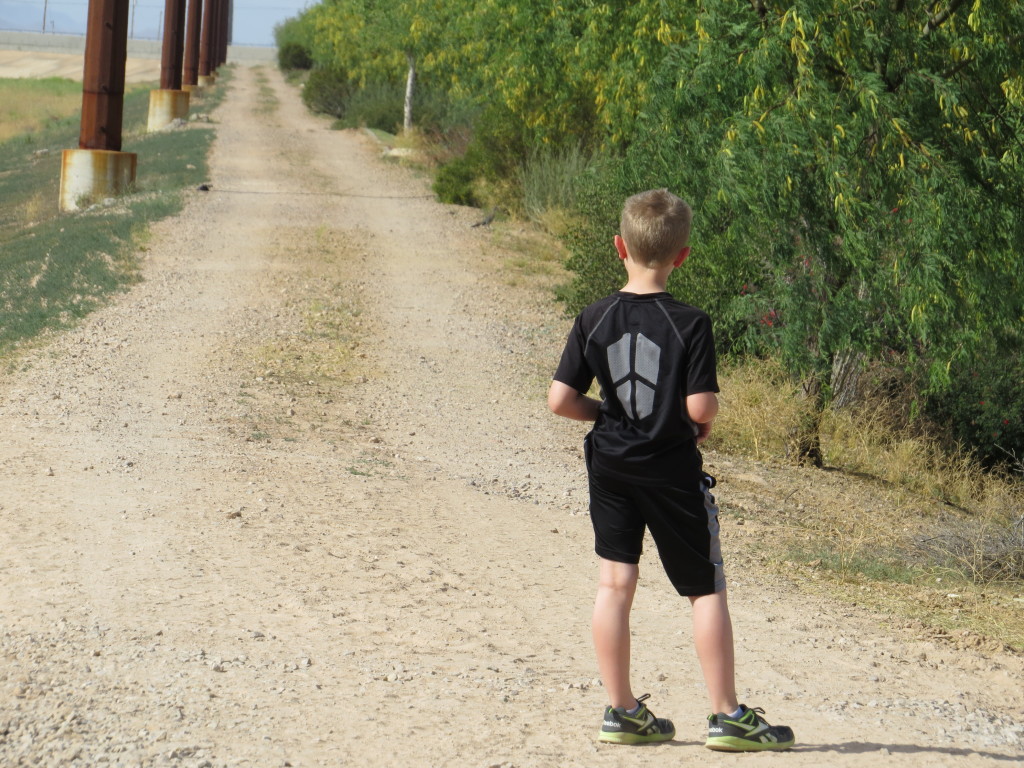
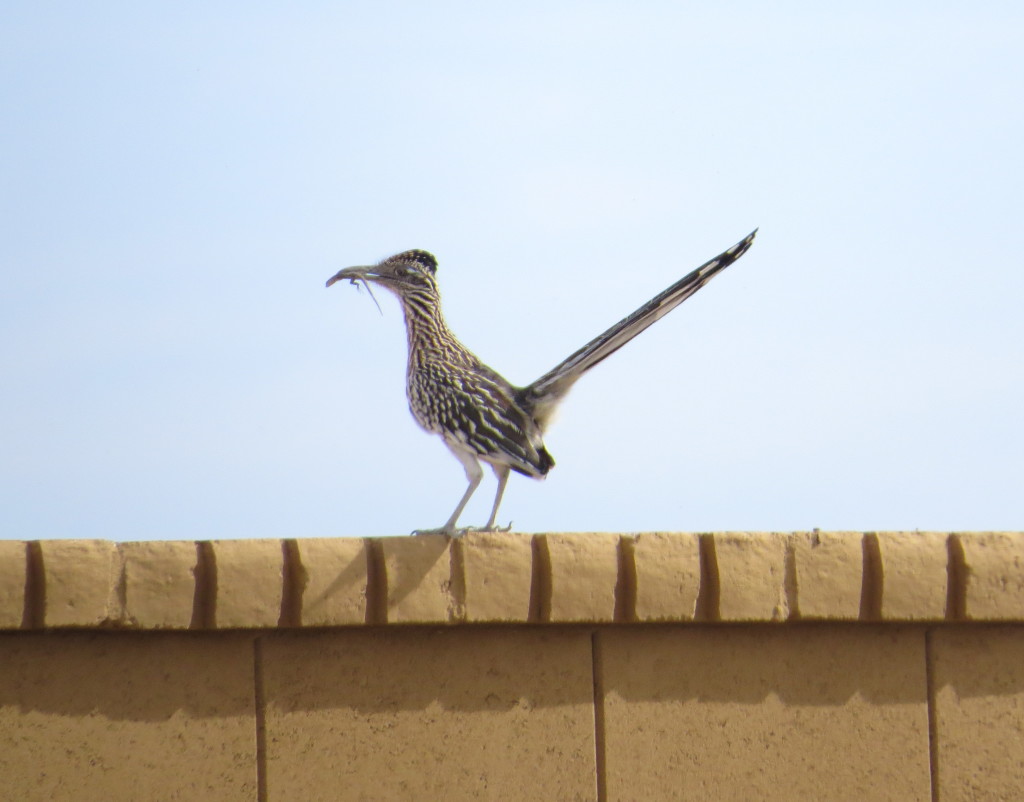
Best Photo Redemption of a Bird
Buff-breasted Sandpiper
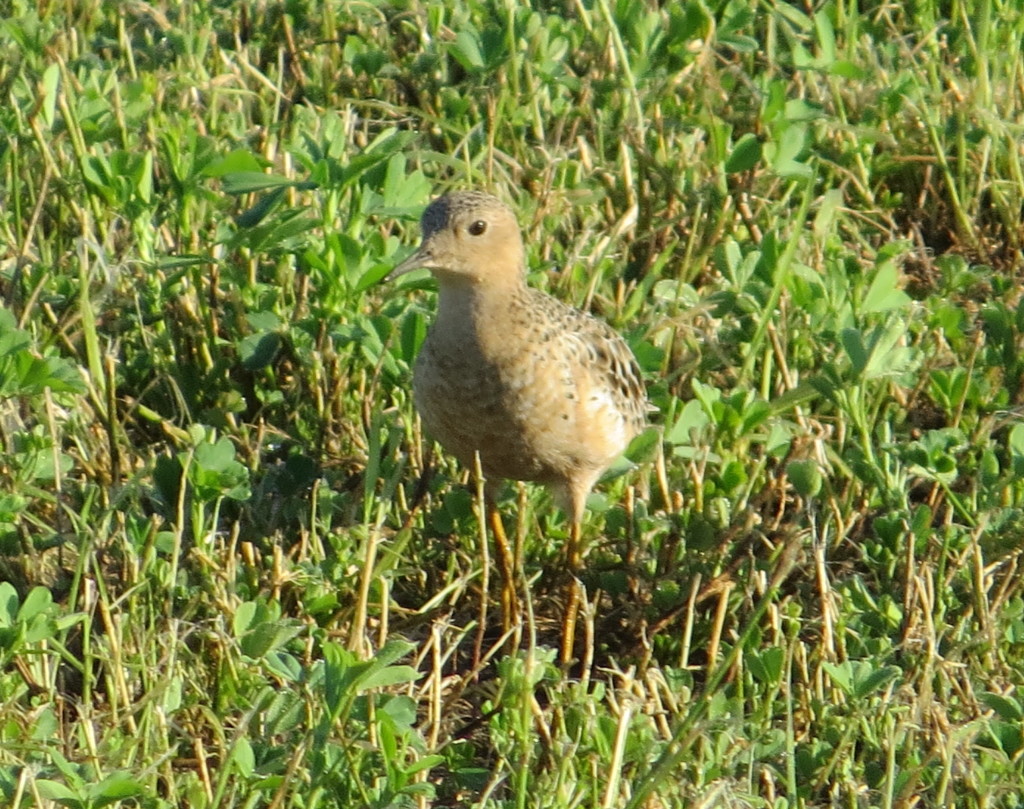
Right?
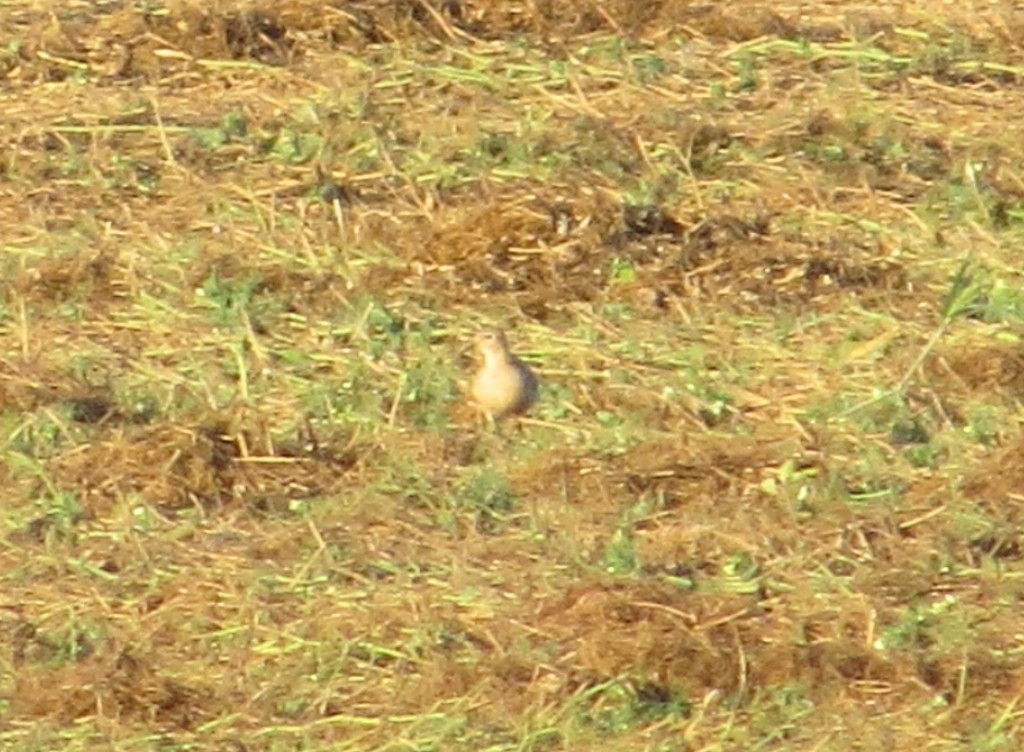
Best Minnesota Warbler
Blackburnian Warbler
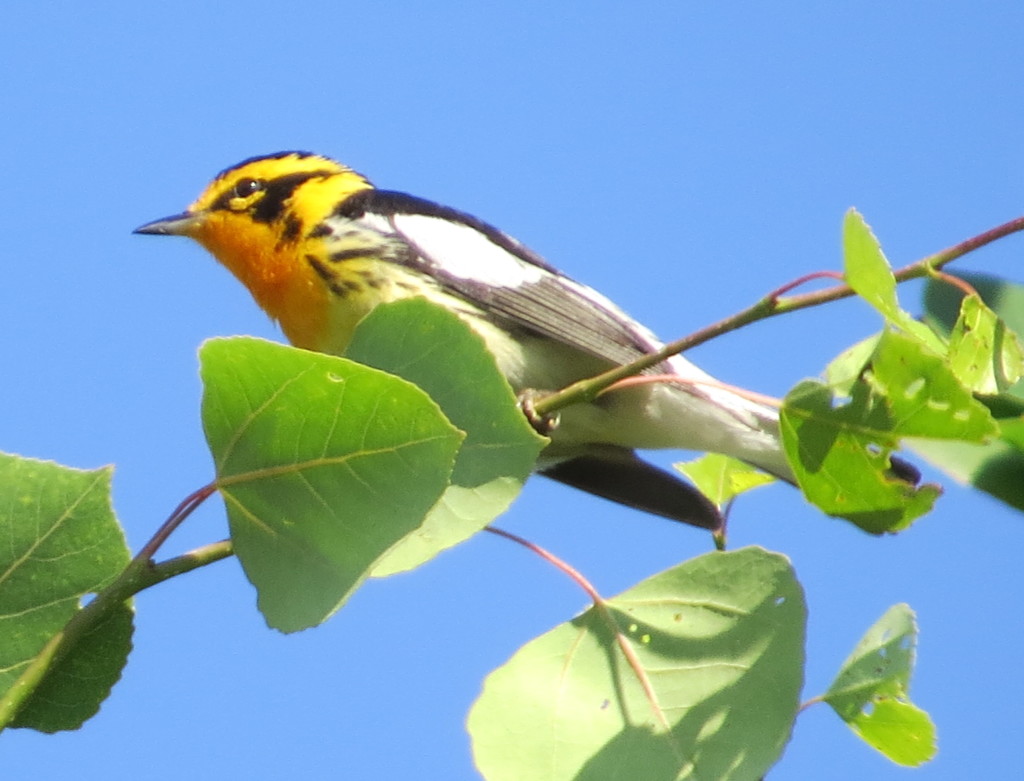
Best Wisconsin Warbler
Black-throated Blue Warbler
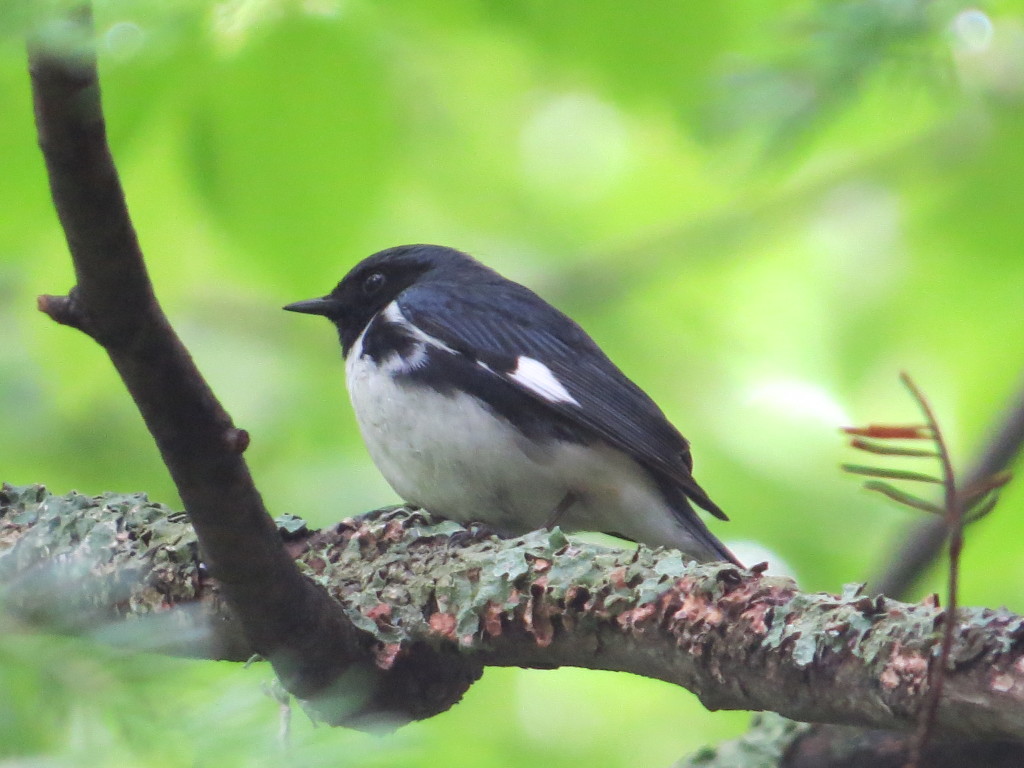
Best Arizona Warbler not in the Top 10 and Best Non-Warbler Warbler
Olive Warbler
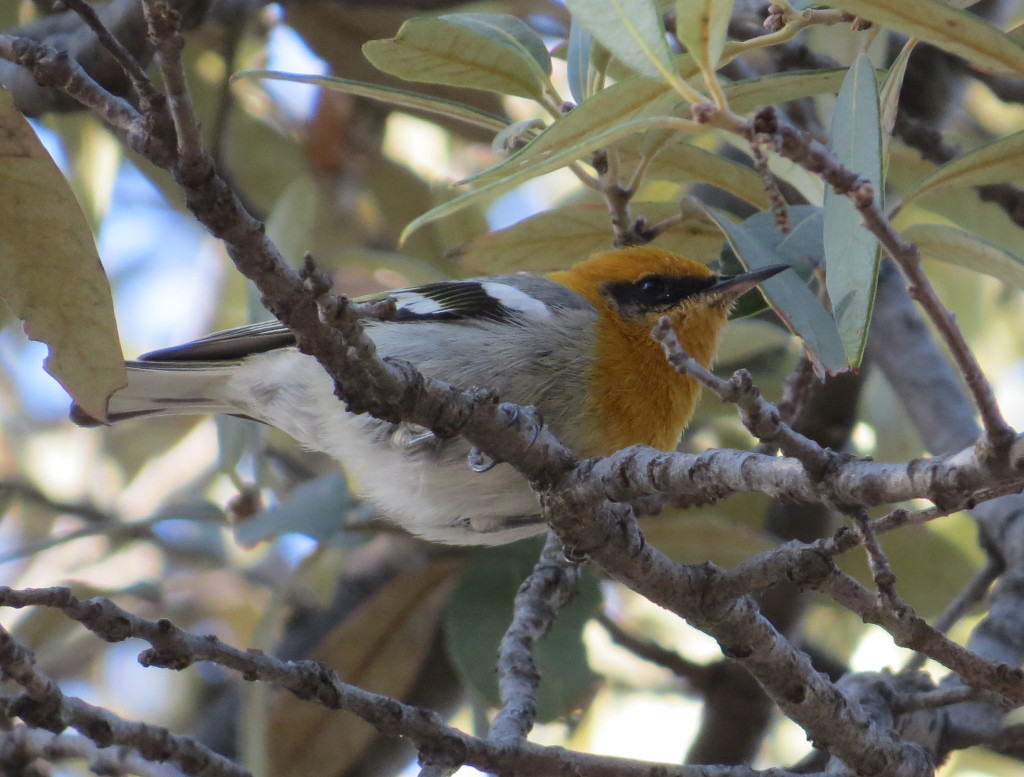
The Top 10 Birds of 2015
So in the biggest year which included 78 life birds, how did I even begin to select a top 10? Well, the answer to that lies not in which birds were the most rare or even the most beautiful, but rather on my experiences with certain birds and the people involved. These are the birds and experiences that are the most fun to think back upon.
10. Snowy Owl
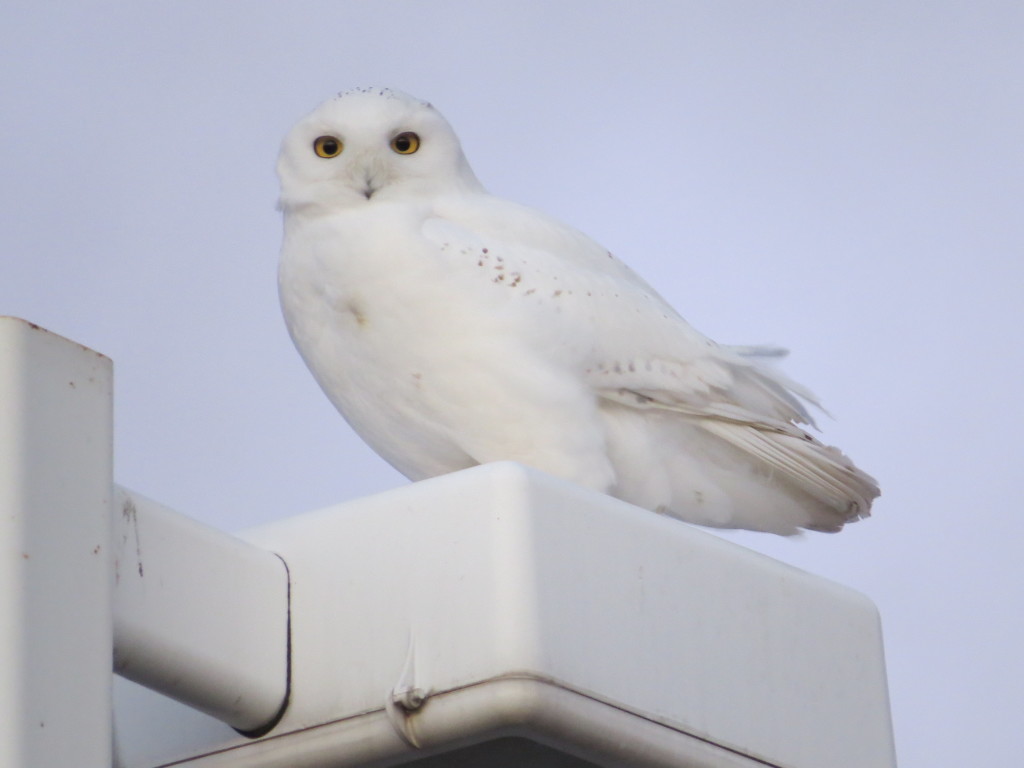
Two years in a row SNOW makes the list, and it wasn’t a lifer either time. So why again? 2015 was another irruption year for this bird, and I finally discovered one on my own. And then I found another, and another, and so on all right here just a few miles from home. The pinnacle of this epic SNOWstorm was when I saw three different owls within just 10 minutes or so, tying Randy Frederickson for the most Snowies seen in one day in Kandiyohi County.
9. Townsend’s Solitaire
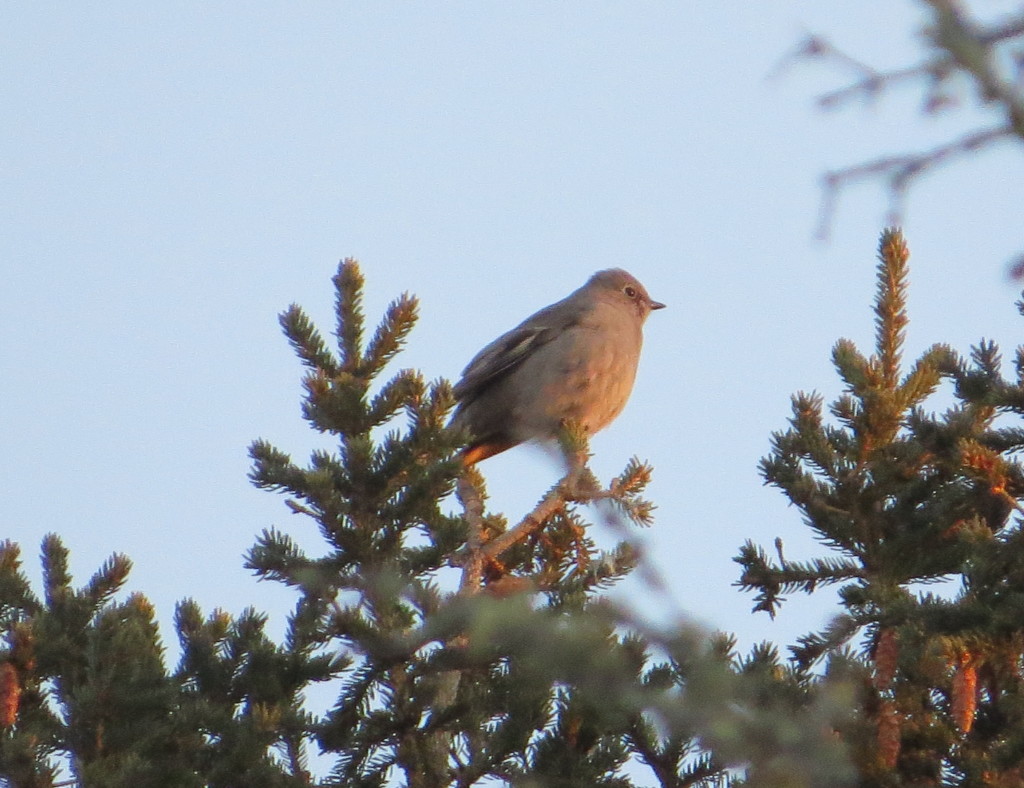 My first lifer for 2015 was a Townsend’s Solitaire, but that’s not why this bird is here. The reason this bird made the cut is that I found one on my own in the old hometown. That’s a pretty sweet feeling on multiple levels.
My first lifer for 2015 was a Townsend’s Solitaire, but that’s not why this bird is here. The reason this bird made the cut is that I found one on my own in the old hometown. That’s a pretty sweet feeling on multiple levels.
8. Northern Pygmy-Owl
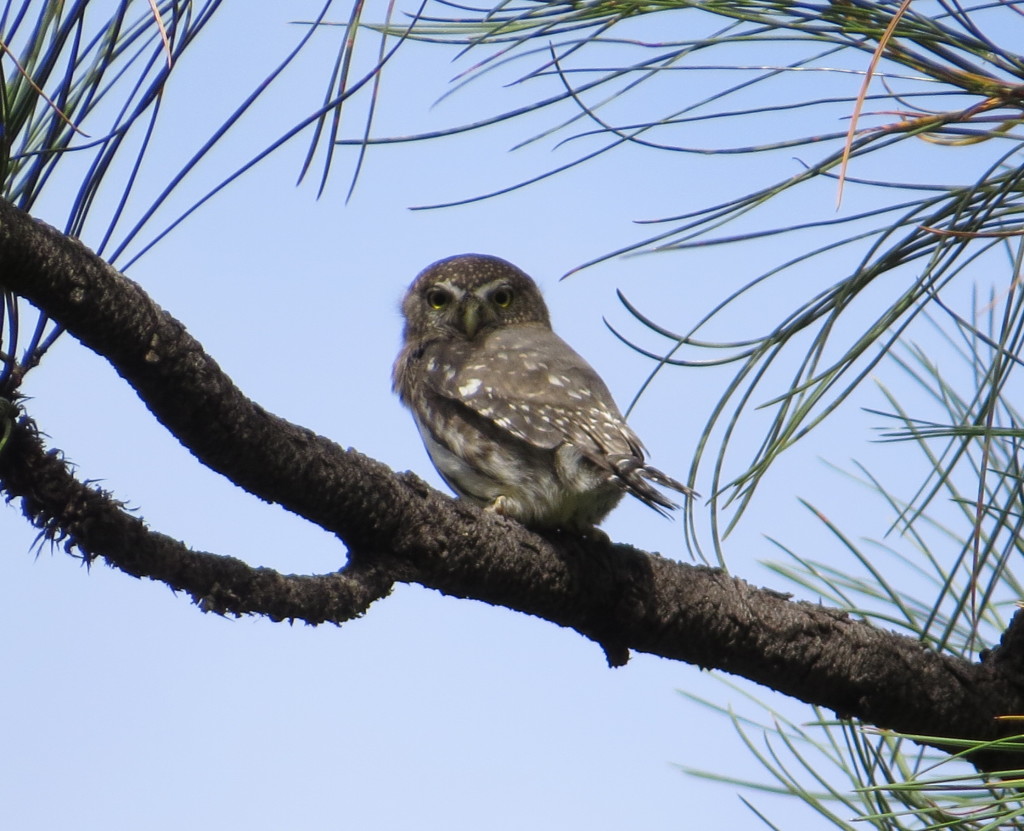 I had five Owl lifers in 2015. In an ordinary year, they’d all deserve one of the top 10 slots. Spotted Owl should probably occupy this slot because of its threatened status, but I just really enjoyed seeing this Pygmy in Hunter Canyon. This tiny Owl was cool just by itself, but the experience made it even better. This is just one of the dozens of life birds that Tommy DeBardeleben and Gordon Karre found for us. Just as much fun as seeing these birds was becoming friends with these guys. There is no doubt that we will have many more adventures together in 2016.
I had five Owl lifers in 2015. In an ordinary year, they’d all deserve one of the top 10 slots. Spotted Owl should probably occupy this slot because of its threatened status, but I just really enjoyed seeing this Pygmy in Hunter Canyon. This tiny Owl was cool just by itself, but the experience made it even better. This is just one of the dozens of life birds that Tommy DeBardeleben and Gordon Karre found for us. Just as much fun as seeing these birds was becoming friends with these guys. There is no doubt that we will have many more adventures together in 2016.
I’ll never forget those 10 minutes of positive stress that occurred while seeing this Owl when Tommy, Gordon, Evan, and I had multiple lifers pop up at once. We went from a Hepatic Tanager to a male Scott’s Oriole to this Northern Pygmy-Owl to a Rufous-capped Warbler. Each required that we ditch the last. How does one focus their attention and photography efforts in such a scenario? Read on and you’ll see.
7. Red Crossbill
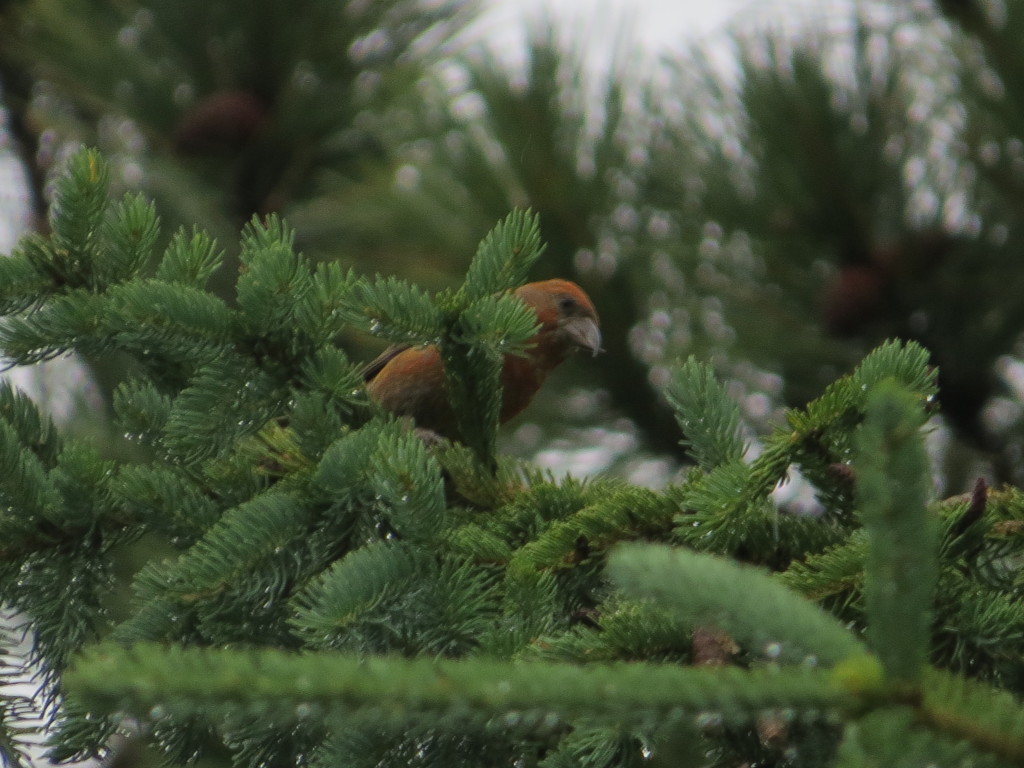
This was a very fun lifer that I got in July, a time when lifers just aren’t to be had. Red Crossbill is an especially challenging species to find in the state. I had been studying the calls of Red Crossbills in the hopes of tracking some down that had been reported up north when we went home to visit family. Little did I know how much that studying paid off. As I stood in my parents’ driveway, this bird was served up on a silver platter when I heard the sound I had been studying and then had a small flock of them land in the spruce tree right next to me. It ended up being a three-generation lifer in my dad’s yard no less. Sometimes it’s the experience that makes the sighting special.
6. Western Screech-Owl
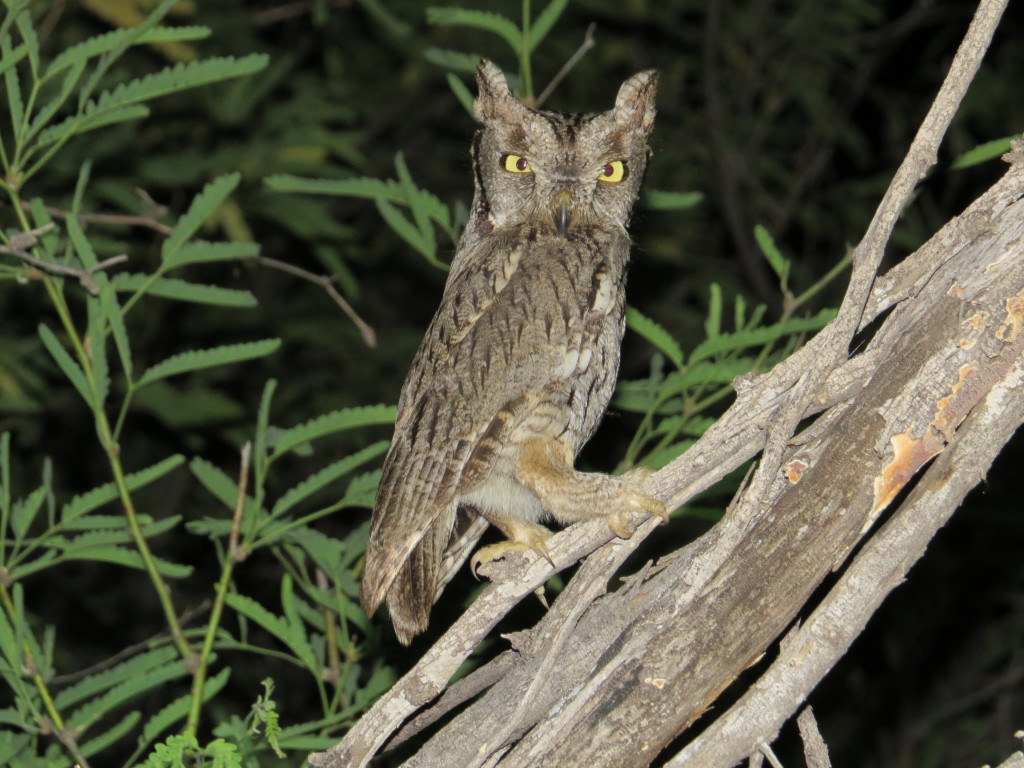 This is probably one of the most common Owls of all my Owl lifers. But rarity status alone does not make for the best experiences. What made this bird so fun was the context in which it occurred. First, night-birding with flashlights adds a whole new level excitement to this hobby. Chris Rohrer said it best when he said it makes you feel like a little kid again to be outside after dark past bedtime. Second, this Owl was so cooperative for Tommy DeBardeleben and me that we got to pose for some laughter-inducing selfies. This is probably the most fun I’ve ever had birding.
This is probably one of the most common Owls of all my Owl lifers. But rarity status alone does not make for the best experiences. What made this bird so fun was the context in which it occurred. First, night-birding with flashlights adds a whole new level excitement to this hobby. Chris Rohrer said it best when he said it makes you feel like a little kid again to be outside after dark past bedtime. Second, this Owl was so cooperative for Tommy DeBardeleben and me that we got to pose for some laughter-inducing selfies. This is probably the most fun I’ve ever had birding.
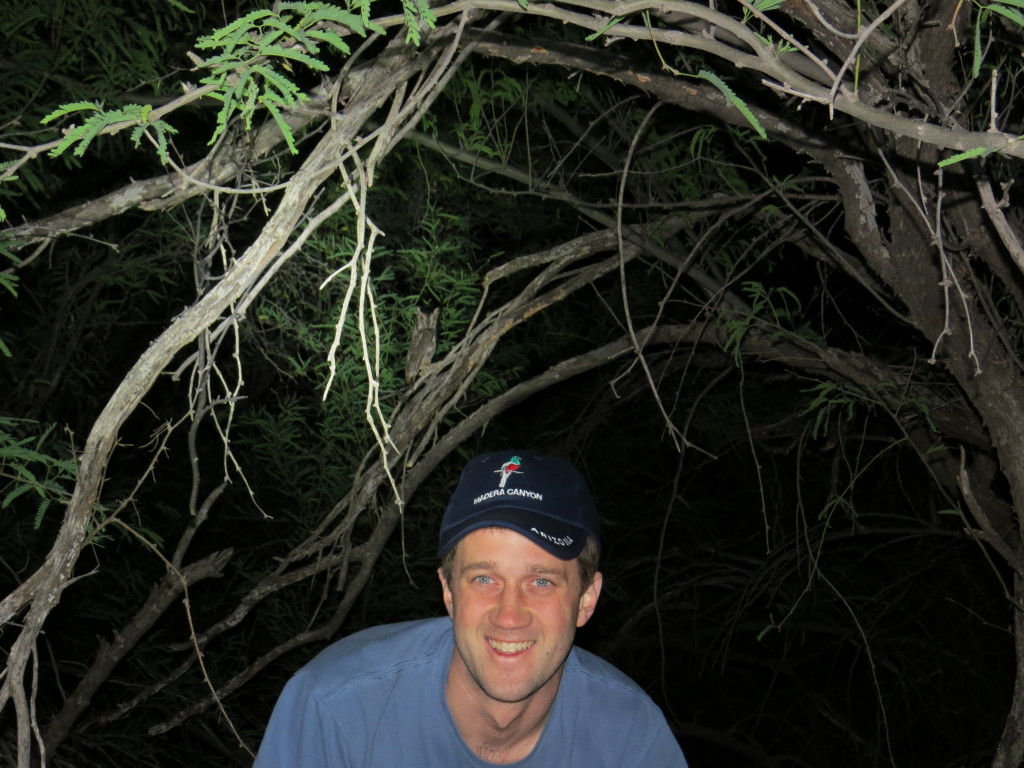
5. Painted Redstart
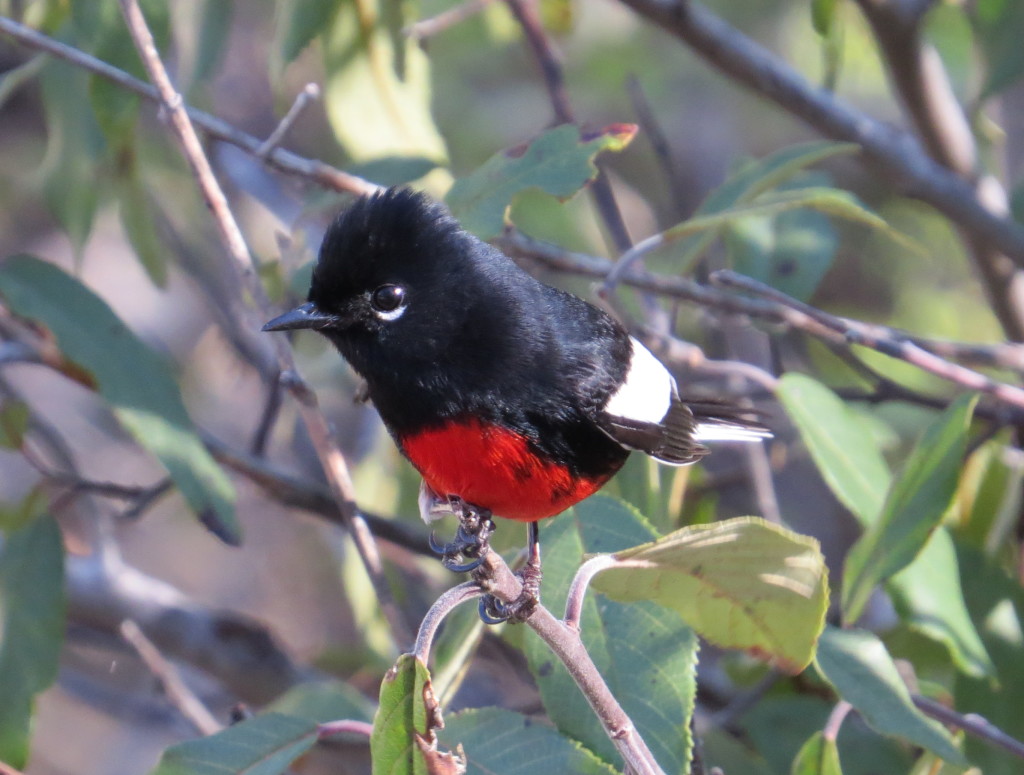 Wow. Just wow. Seeing them at my feet? Unbelievable.
Wow. Just wow. Seeing them at my feet? Unbelievable.
4. Rufous-capped Warbler
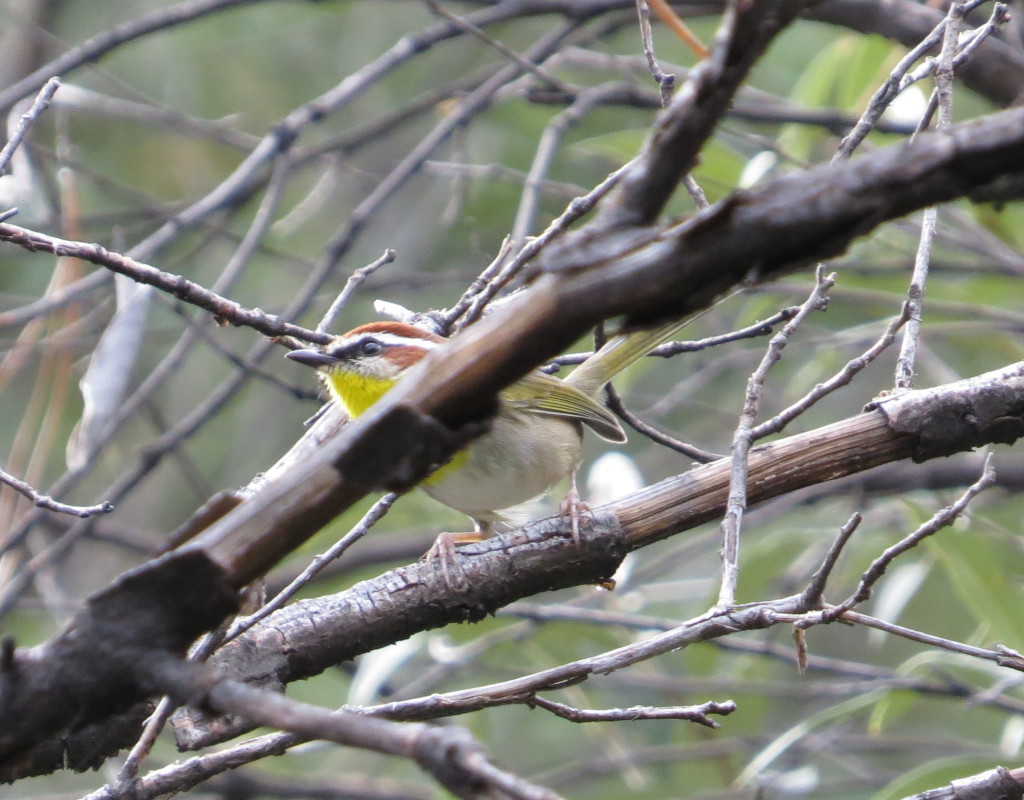 The Rufous-capped Warbler beat out the Pygmy Owl and the Oriole that day in Hunter Canyon. This rare Mexican visitor was the main target of AZ trip #2. I can’t believe I saw one. I can’t believe I got a photo.
The Rufous-capped Warbler beat out the Pygmy Owl and the Oriole that day in Hunter Canyon. This rare Mexican visitor was the main target of AZ trip #2. I can’t believe I saw one. I can’t believe I got a photo.
3. Elegant Trogon
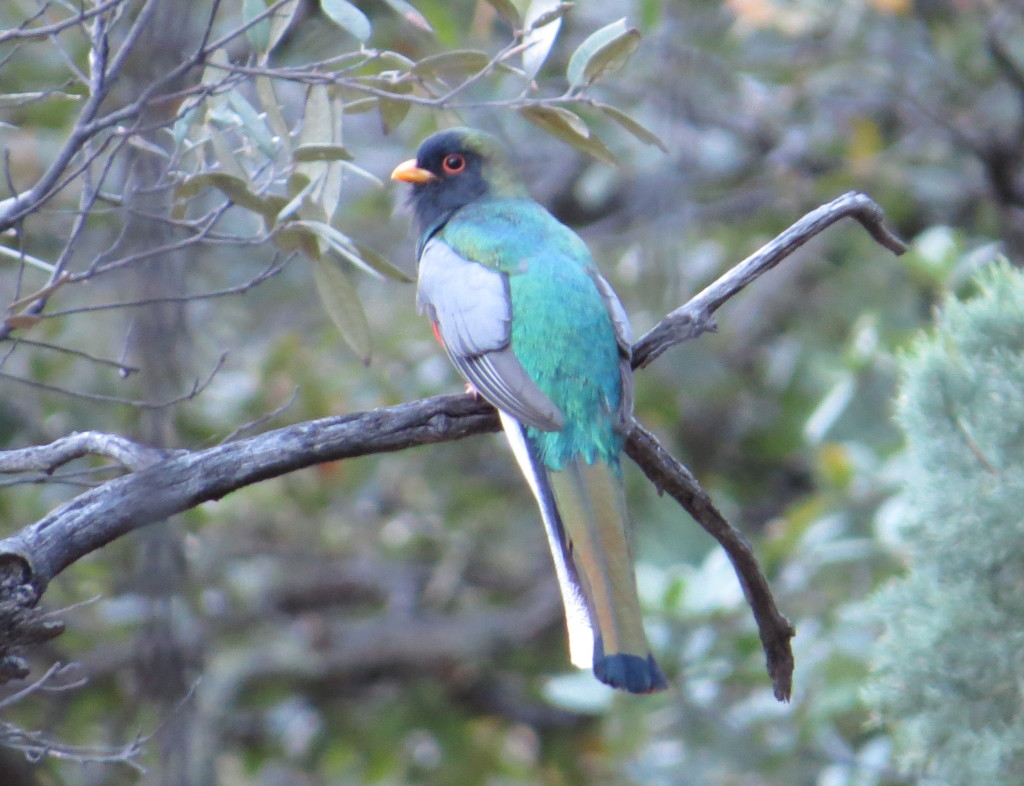 Can you believe a year in which Elegant Trogon doesn’t get the top slot? I mean, seriously? This was the main target for AZ trip #1. We were successful on the last morning. Tommy led us to victory that day. What a thrill it was to chase this bird up the mountainside in Madera Canyon. The Elegant Trogon Fantastic Four made for an epic team. A huge thanks goes out to these two guys for being responsible for most of the birds seen in this list, but this one especially. Any other year guys and it would have been tops!
Can you believe a year in which Elegant Trogon doesn’t get the top slot? I mean, seriously? This was the main target for AZ trip #1. We were successful on the last morning. Tommy led us to victory that day. What a thrill it was to chase this bird up the mountainside in Madera Canyon. The Elegant Trogon Fantastic Four made for an epic team. A huge thanks goes out to these two guys for being responsible for most of the birds seen in this list, but this one especially. Any other year guys and it would have been tops!
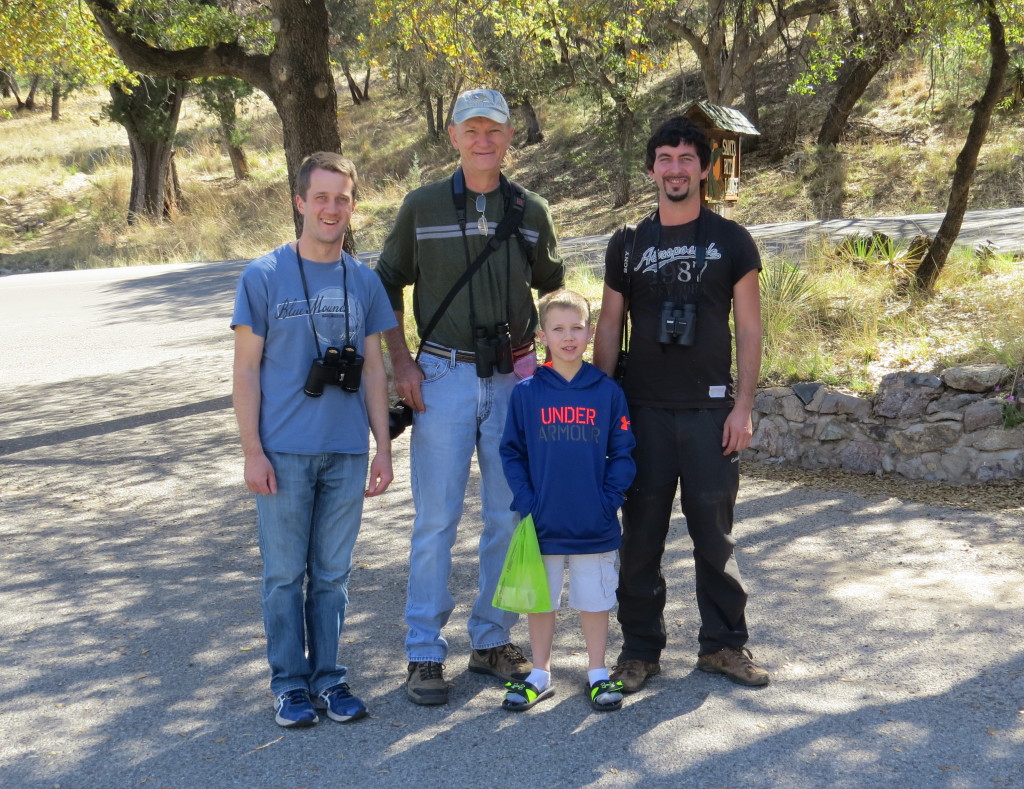 2. Gyrfalcon
2. Gyrfalcon
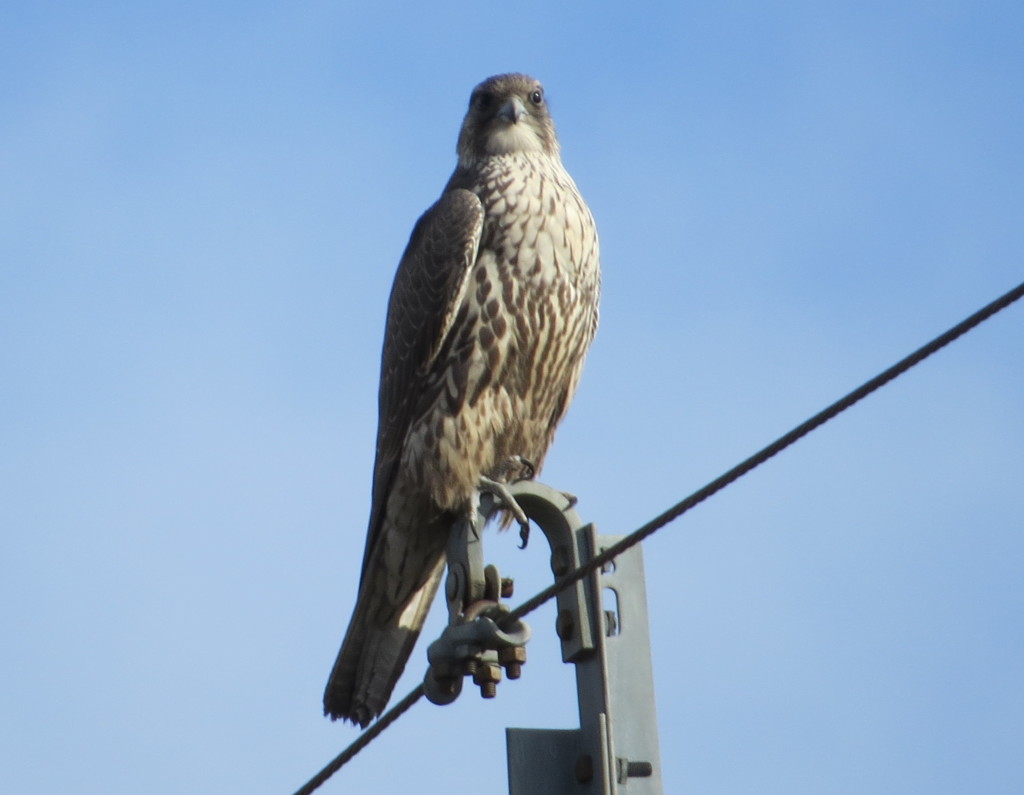 Now here’s one that I wasn’t expecting, as in at all, as in ever. 2015 was the year of the Gyrfalcon. I picked up my lifer in Superior, WI early in the year, but what catapulted this bird near the top of this list was when I accidentally stumbled on the bird pictured above right here in Kandiyohi County, giving me my state and county bird in one sweet shot with a good photo op to boot. Considering one hadn’t been seen in Minnesota in nearly three years, I was just a little excited when Bob Dunlap and a host of birding experts told me my misidentified Peregrine was actually a Gyr.
Now here’s one that I wasn’t expecting, as in at all, as in ever. 2015 was the year of the Gyrfalcon. I picked up my lifer in Superior, WI early in the year, but what catapulted this bird near the top of this list was when I accidentally stumbled on the bird pictured above right here in Kandiyohi County, giving me my state and county bird in one sweet shot with a good photo op to boot. Considering one hadn’t been seen in Minnesota in nearly three years, I was just a little excited when Bob Dunlap and a host of birding experts told me my misidentified Peregrine was actually a Gyr.
1. Greater Sage-Grouse
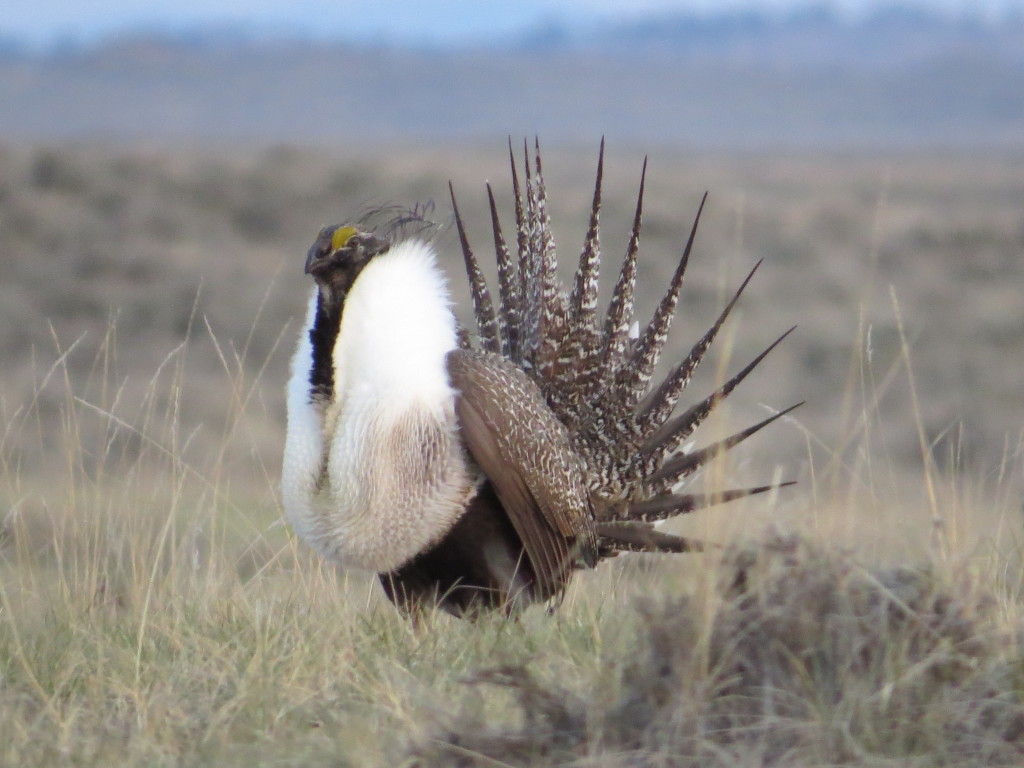 This bird had the top spot locked down before 2015 even began. This was a very special bird that Evan and I made a special trip to Montana to see. We got this lifer in the company of my dad who researched this bird extensively in the 1970s for the Montana Fish&Game Department (presently called the Montana Department of Fish, Wildlife, and Parks). We didn’t just see this bird. From a blind we got to observe the males doing their elaborate courtship displays on the lek. There was no better way to add this bird to the life list. The Greater Sage-Grouse was hands-down the best bird of 2015. A special thanks goes out to John Carlson for setting up the adventure, Charlie Eustace for joining us, Leo and Jo Jurica for hosting us, and to my dad for humoring my idea. It was a pleasure to meet John and Charlie and go on a very memorable outing together.
This bird had the top spot locked down before 2015 even began. This was a very special bird that Evan and I made a special trip to Montana to see. We got this lifer in the company of my dad who researched this bird extensively in the 1970s for the Montana Fish&Game Department (presently called the Montana Department of Fish, Wildlife, and Parks). We didn’t just see this bird. From a blind we got to observe the males doing their elaborate courtship displays on the lek. There was no better way to add this bird to the life list. The Greater Sage-Grouse was hands-down the best bird of 2015. A special thanks goes out to John Carlson for setting up the adventure, Charlie Eustace for joining us, Leo and Jo Jurica for hosting us, and to my dad for humoring my idea. It was a pleasure to meet John and Charlie and go on a very memorable outing together.
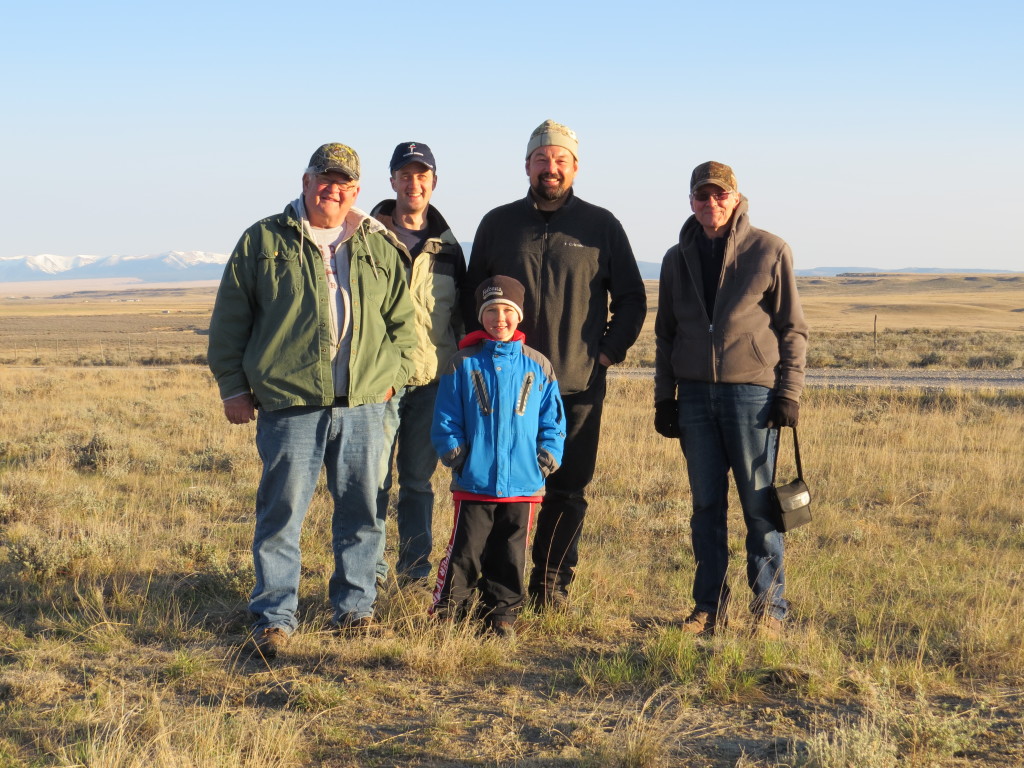
L-R: Dad, Me, Evan, John Carlson, Charlie Eustace
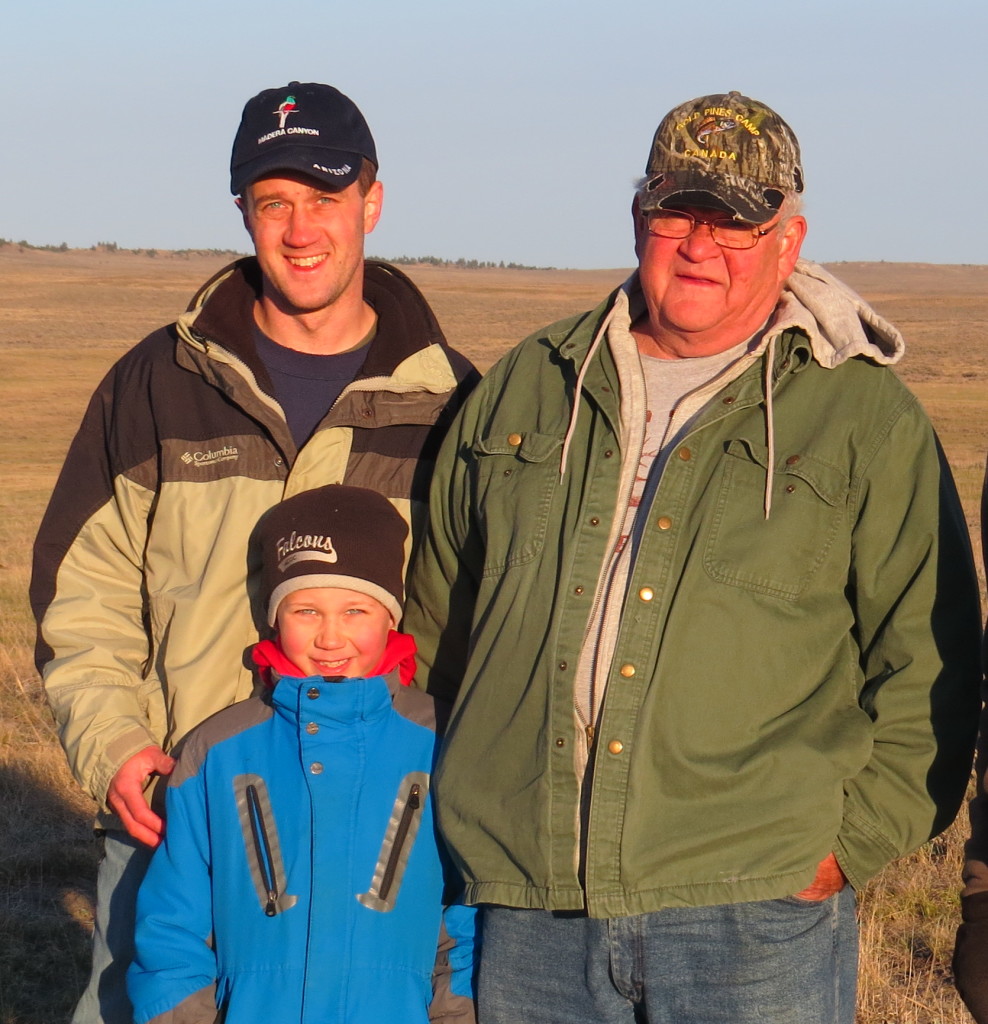
When 2014 ended, I didn’t have any idea that 2015 could rival it. Looking back, I think 2015 actually surpassed 2014 in its greatness. Not only did I see some amazing things, but I got to go birding with so many incredible people. The combination of those two things is what makes this hobby so great. So what does the future hold? I’m not sure. I can honestly say that I have no expectations for 2016. I have a couple minor birding goals, mostly numbers related, but little else at this point. It is my hope to not let birding consume my year and that the experiences I do have favor quality over quantity. I’m excited to see the birds and people that cross our path this year.

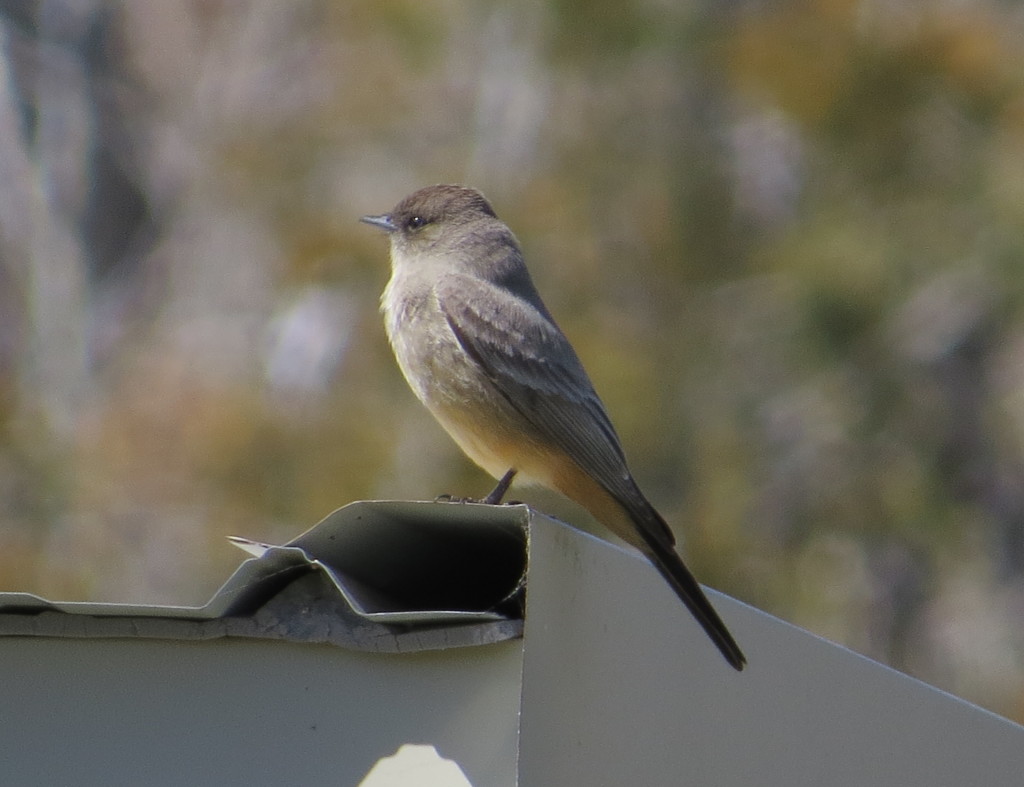
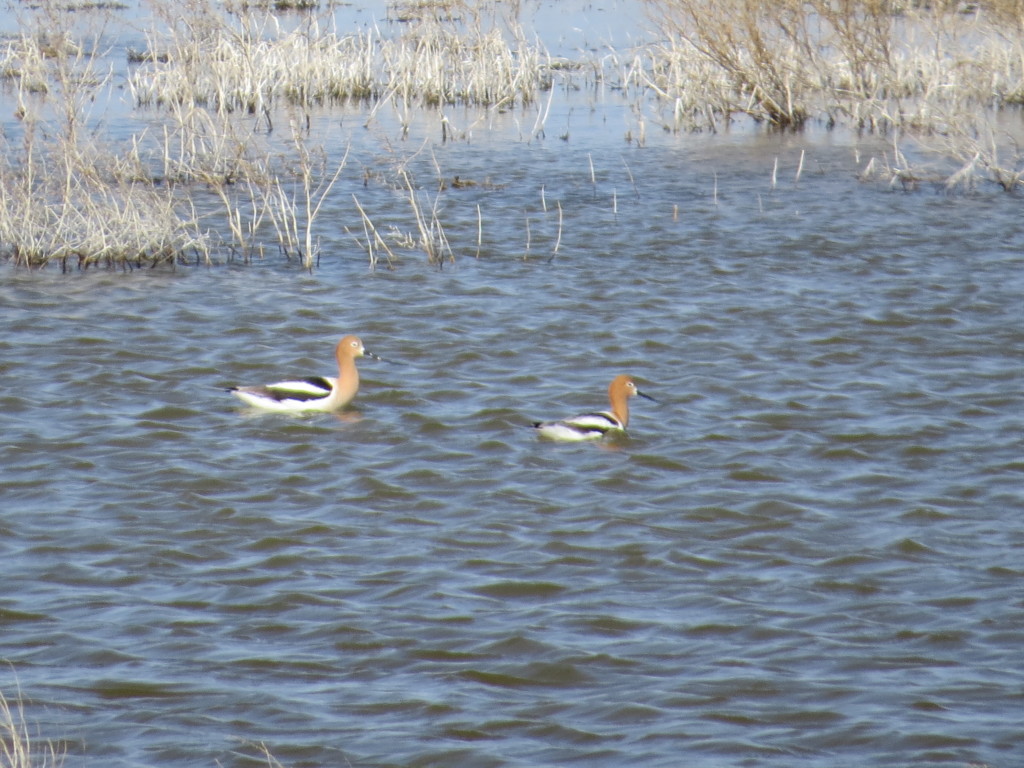
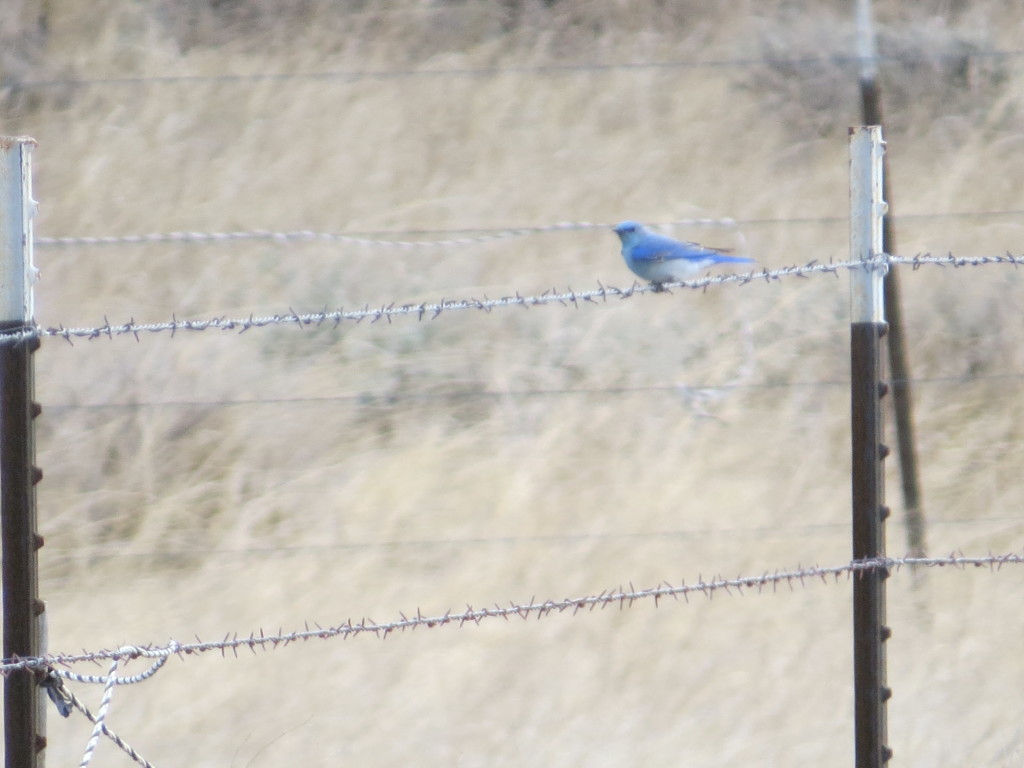
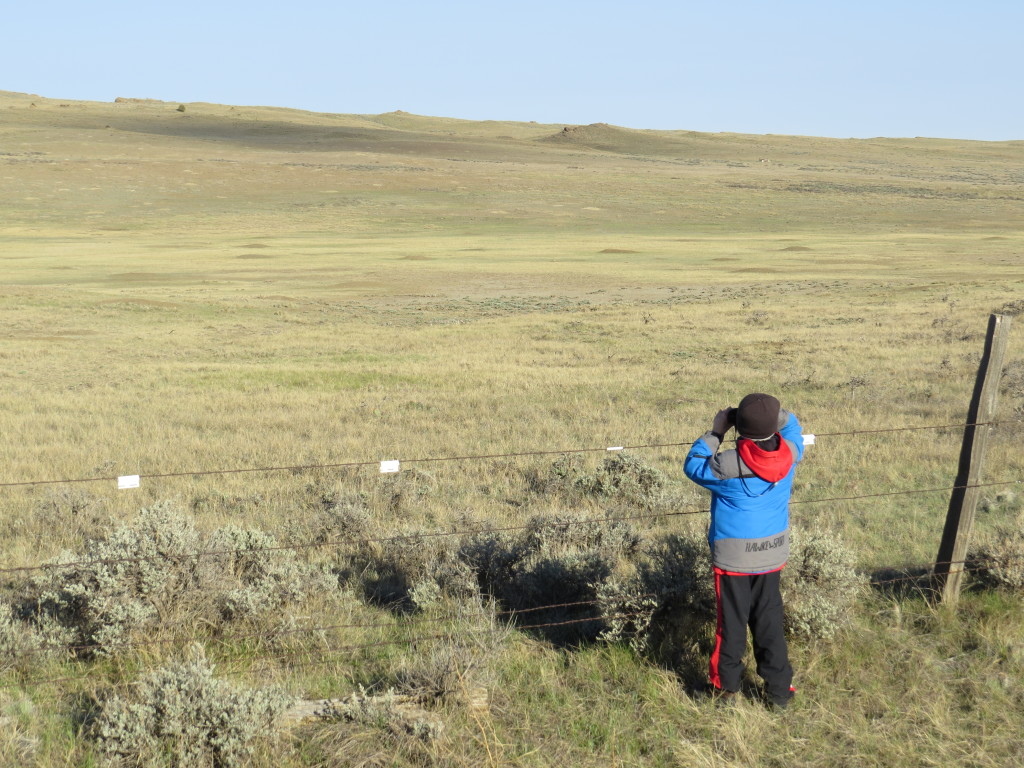
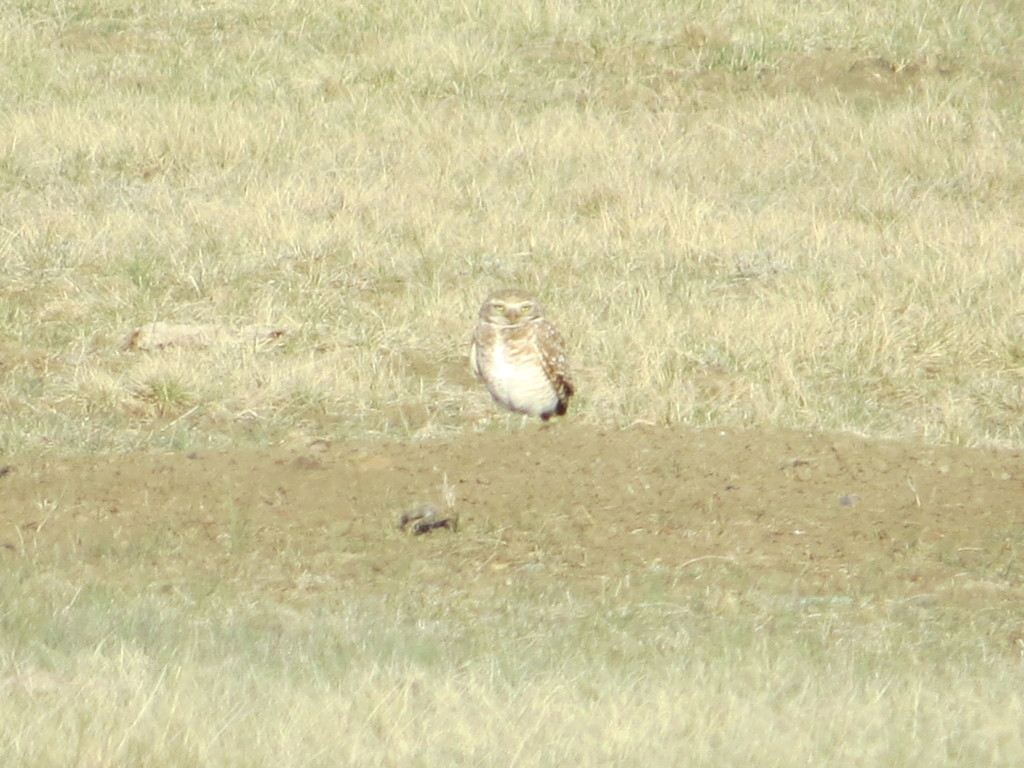
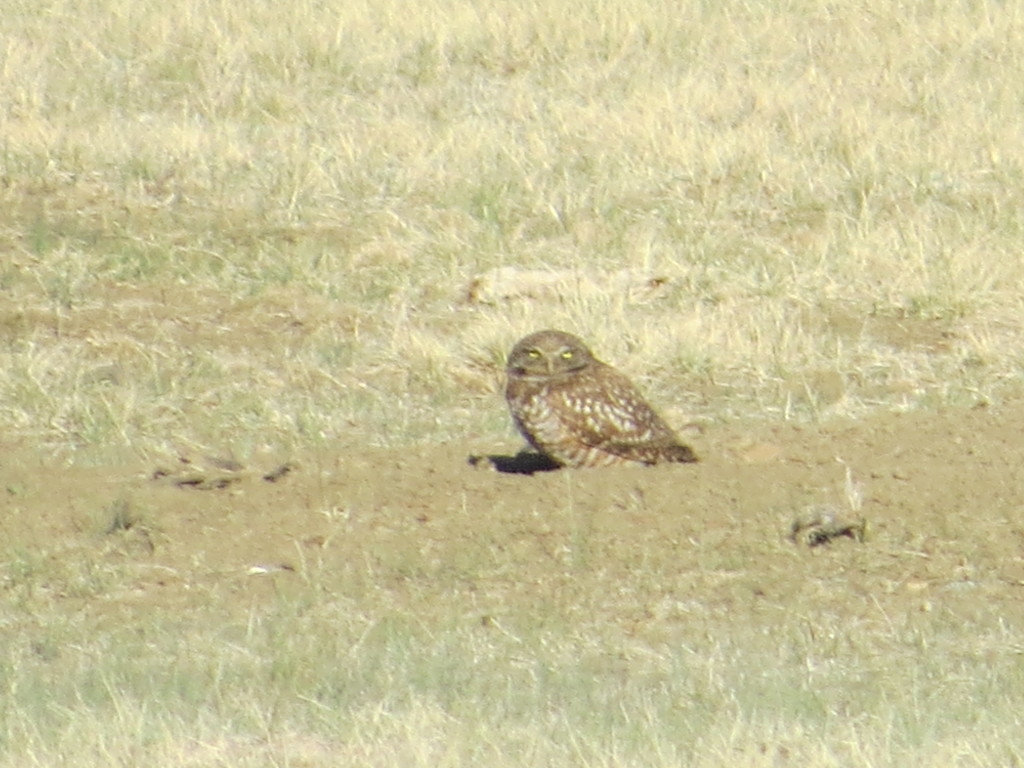
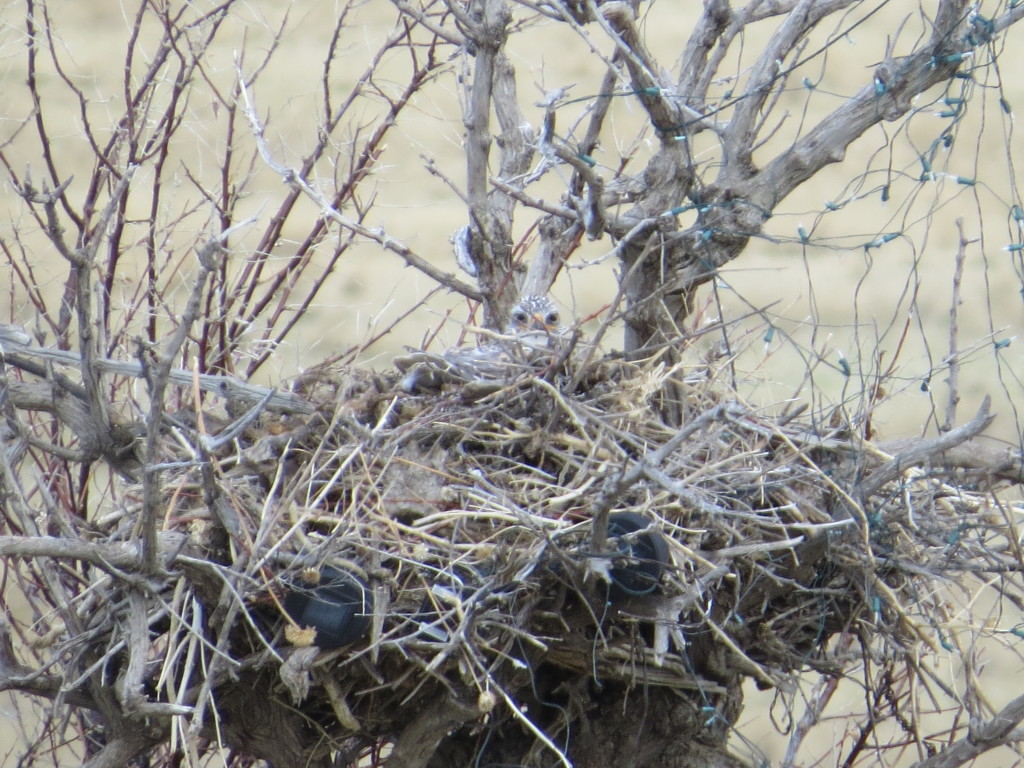
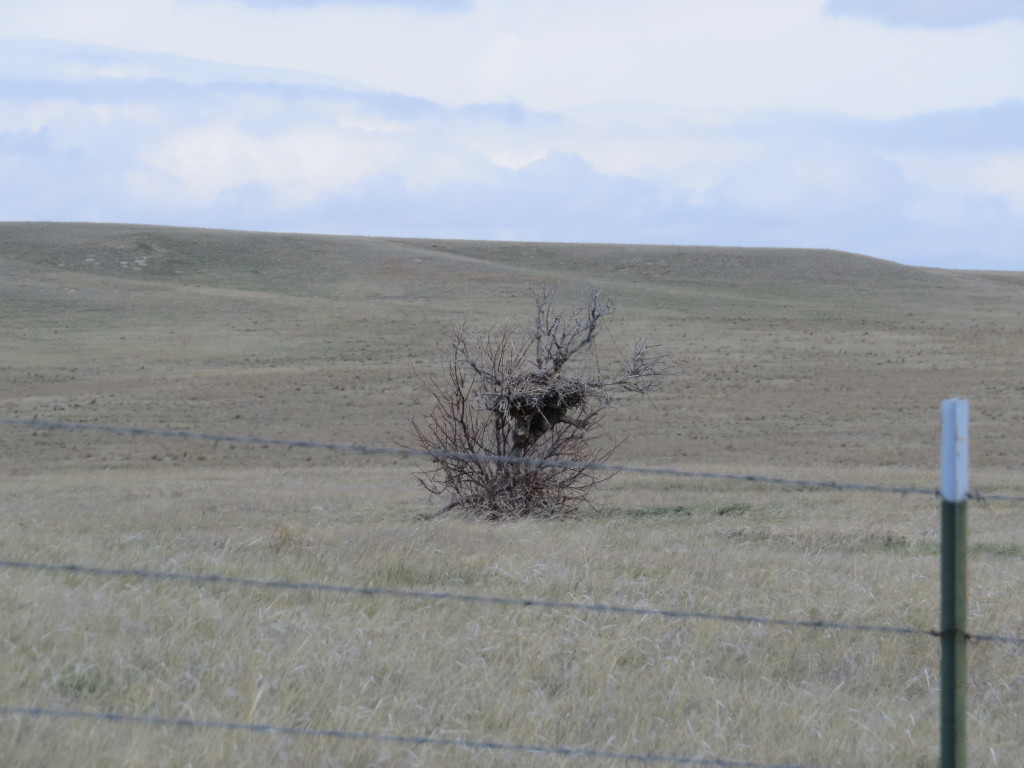
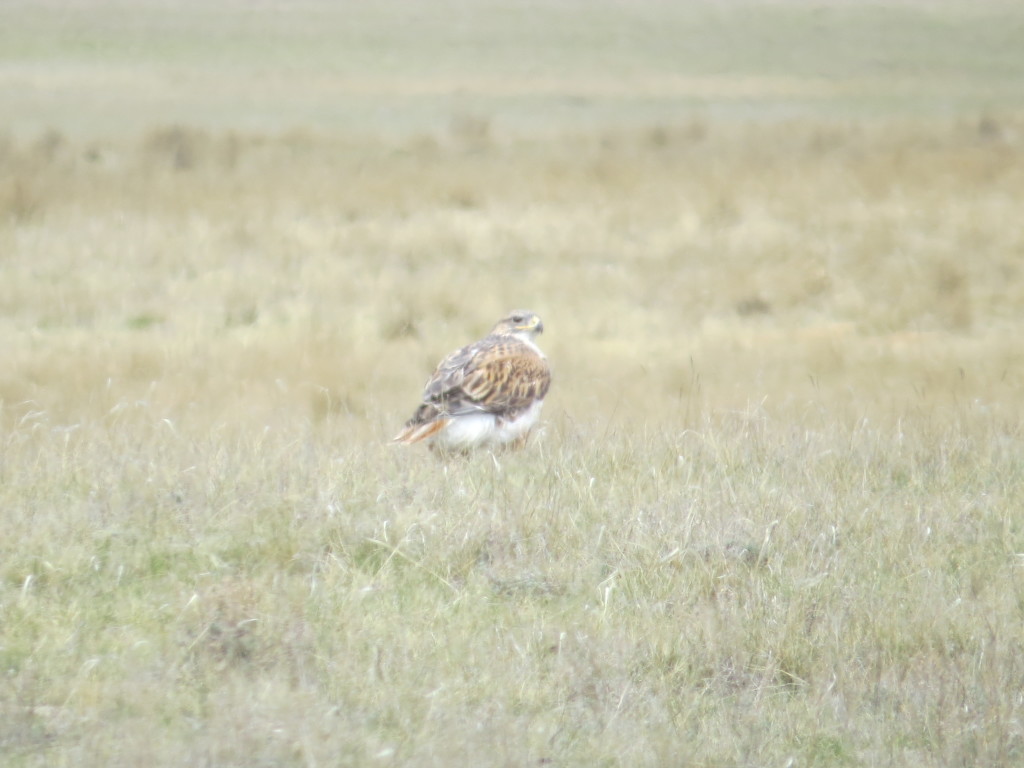 It was fun to see the male exhibiting the behavior described in the field guide, which is sitting out in the open on the ground and always in a perfect western setting.
It was fun to see the male exhibiting the behavior described in the field guide, which is sitting out in the open on the ground and always in a perfect western setting.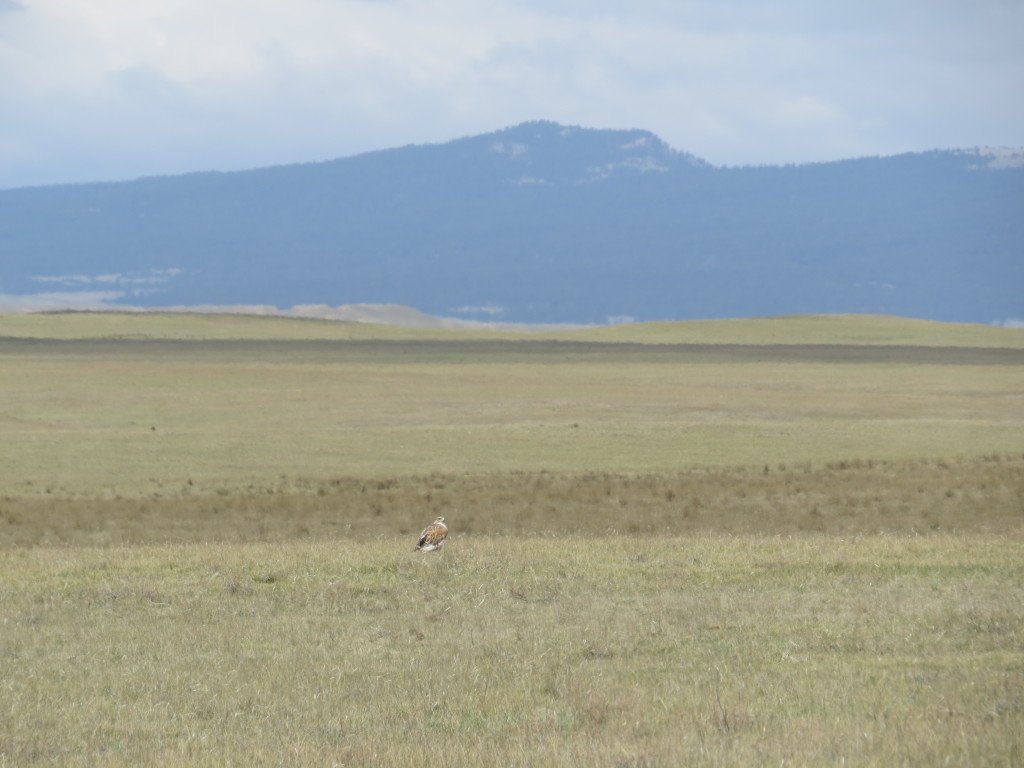
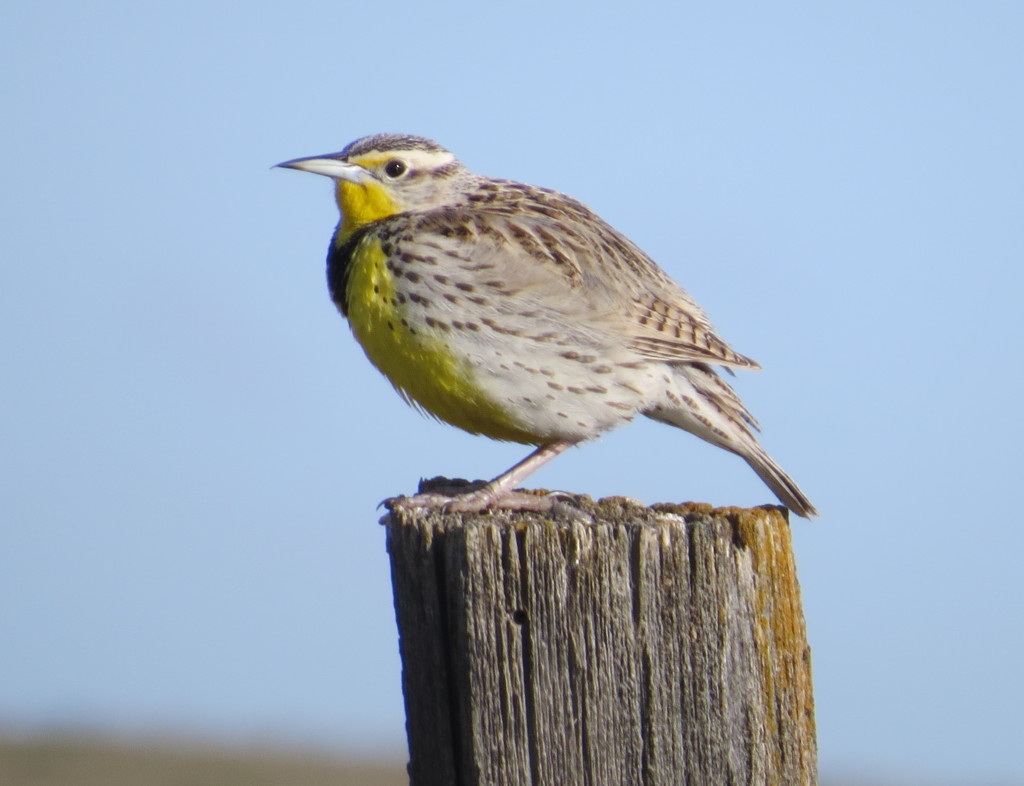
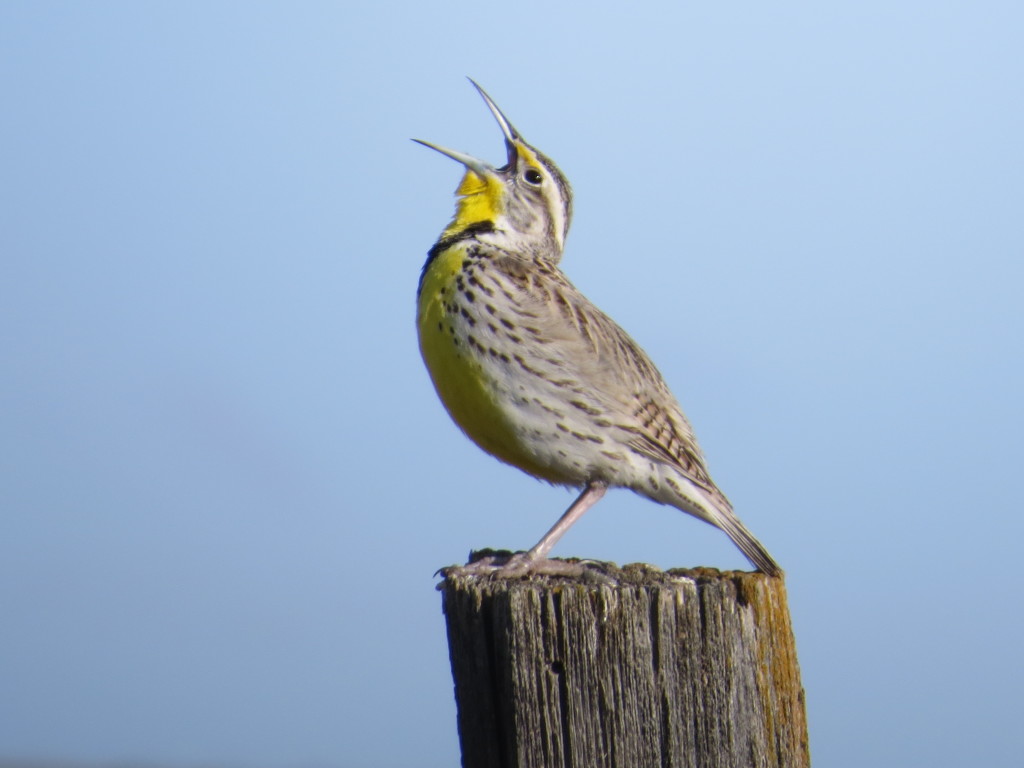
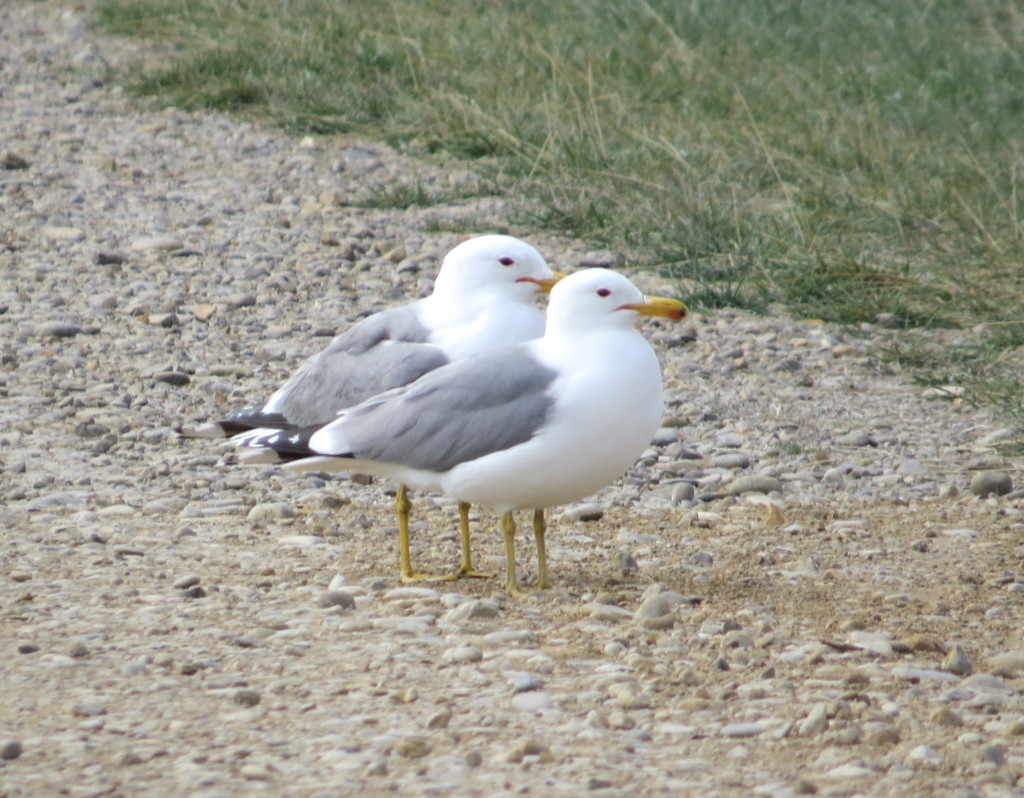
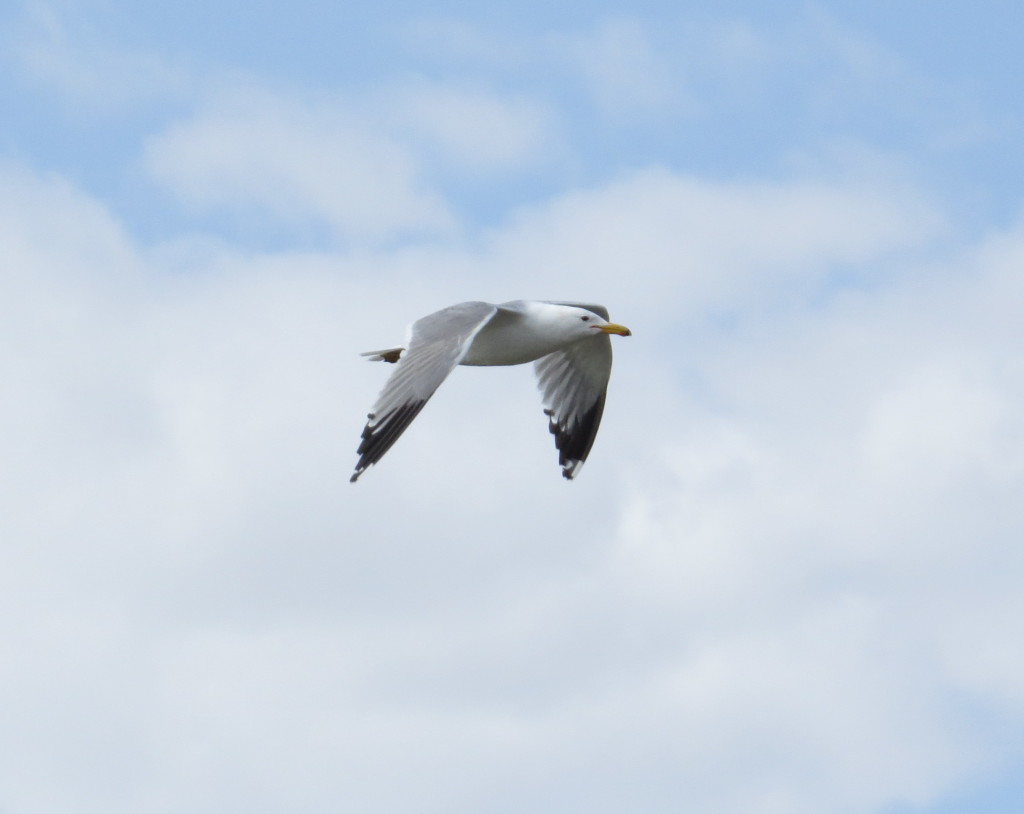
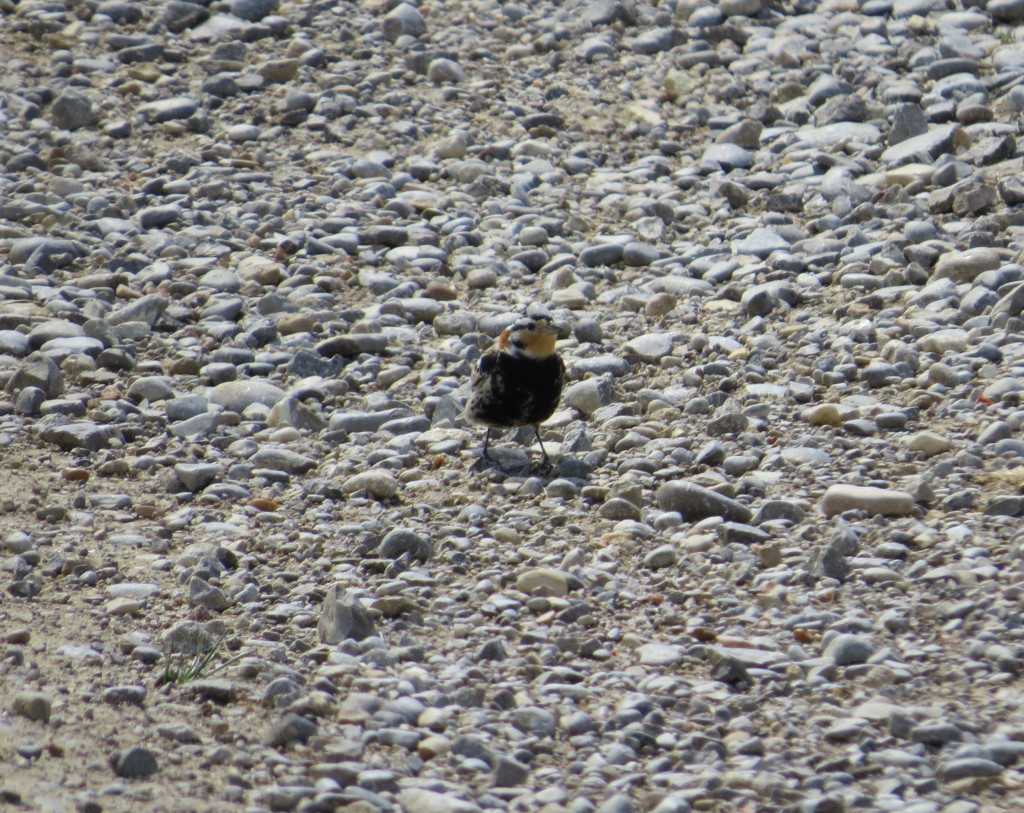
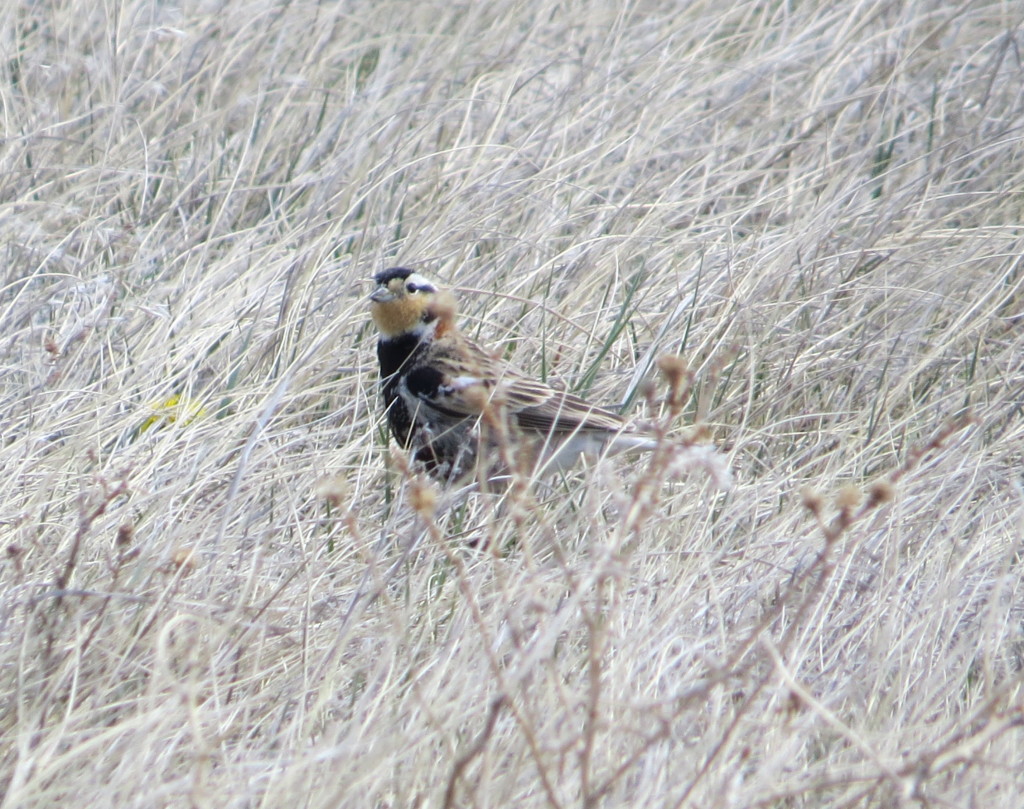 I don’t recall the name of the road we traveled where we saw this Chestnut-collared Longspur, but whatever it’s called, I’ve dubbed it Longspur Road.
I don’t recall the name of the road we traveled where we saw this Chestnut-collared Longspur, but whatever it’s called, I’ve dubbed it Longspur Road.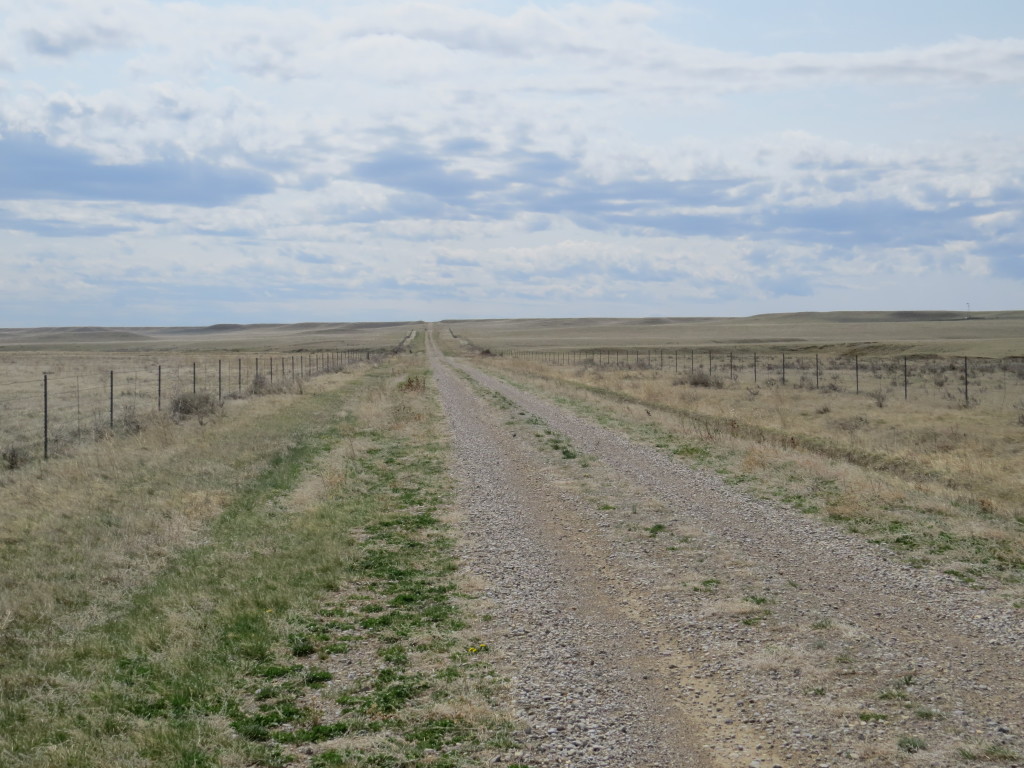
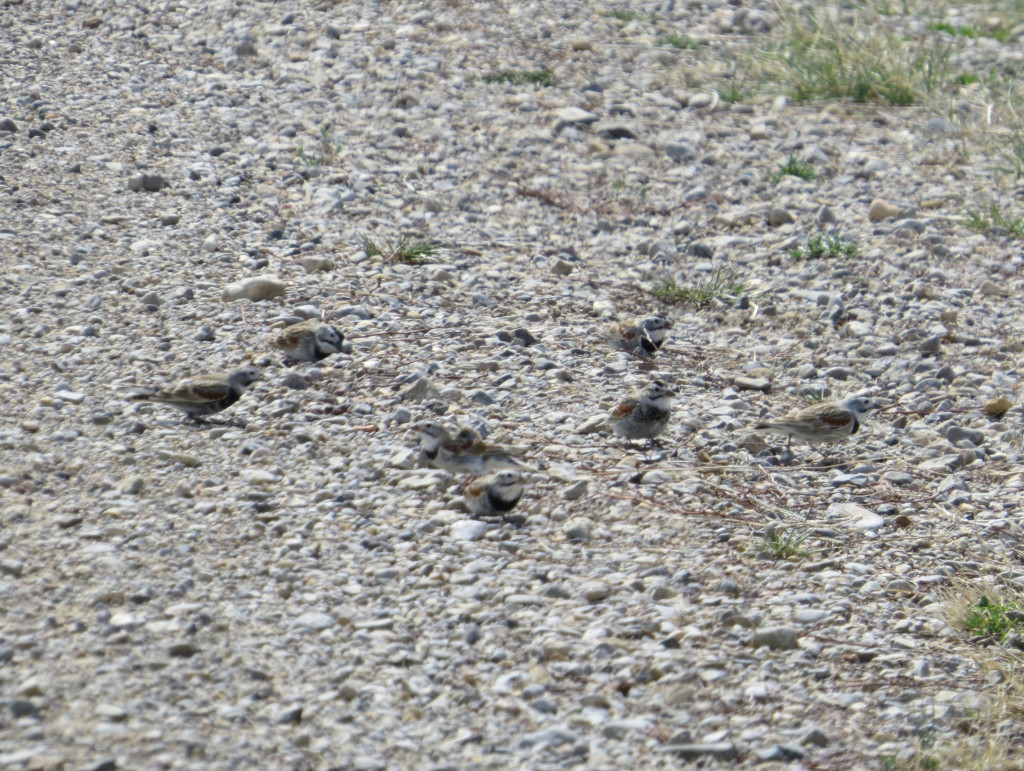
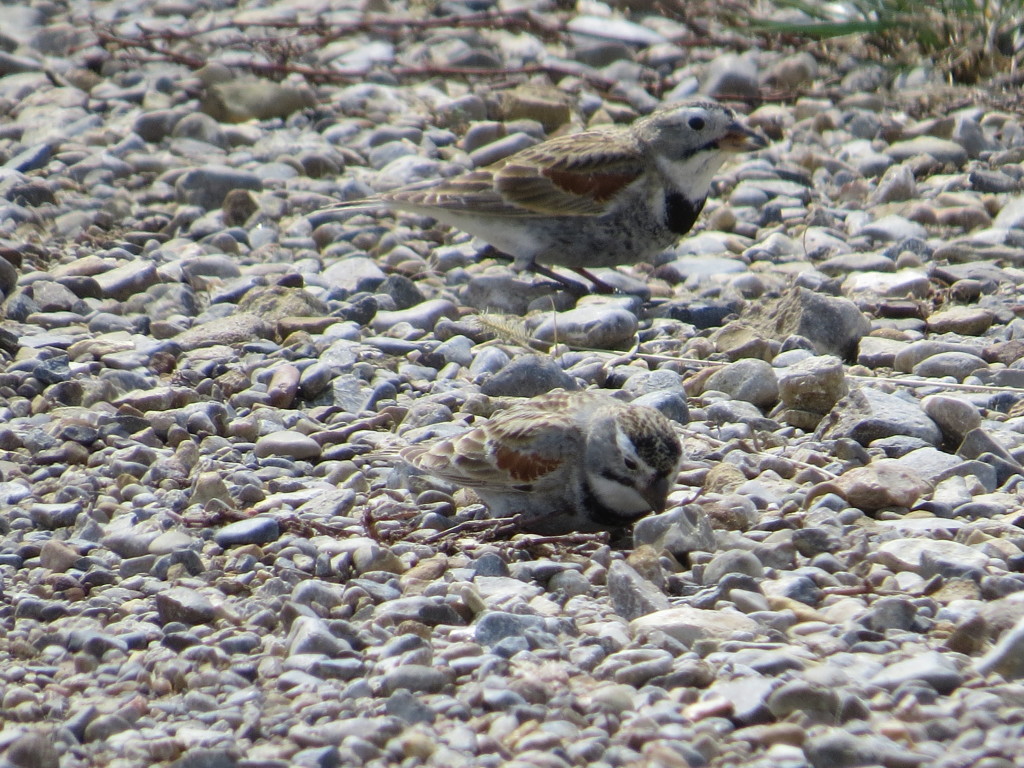
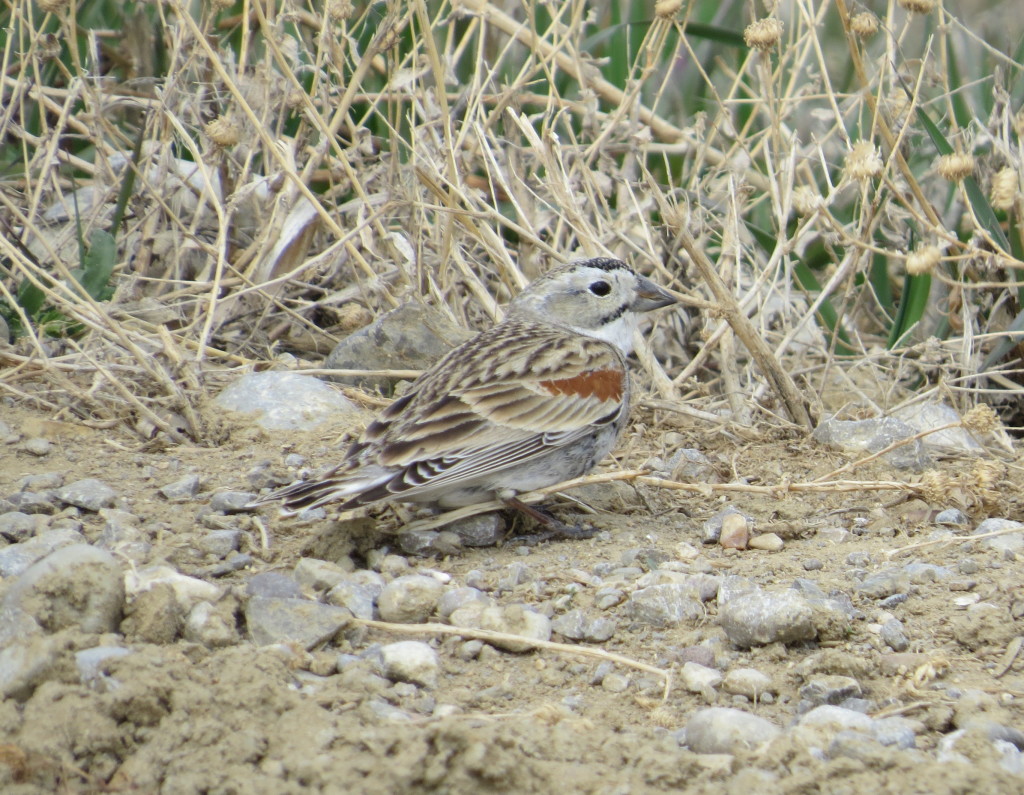
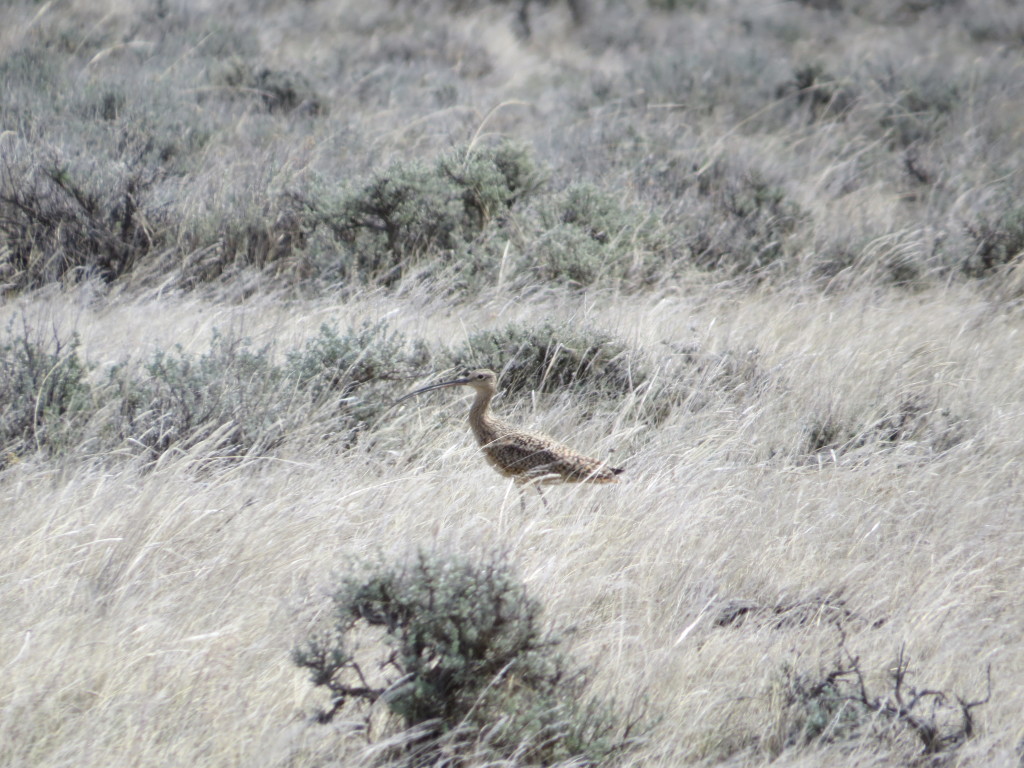
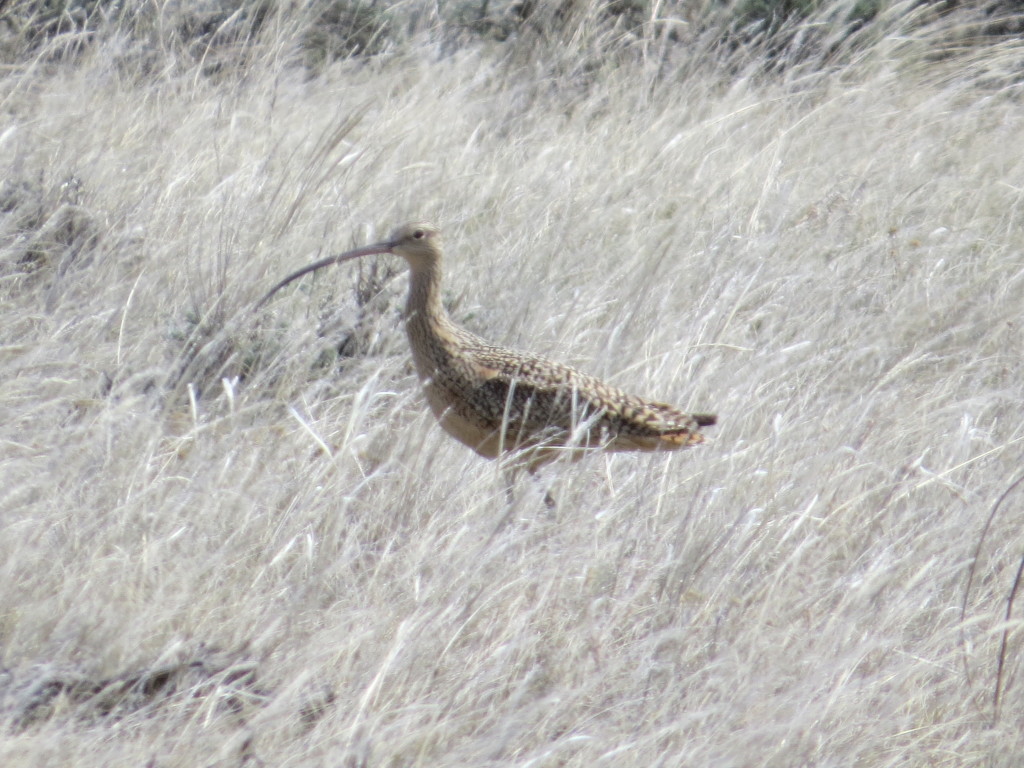 We ended up seeing a second Curlew a little later, but neither were very photogenic.
We ended up seeing a second Curlew a little later, but neither were very photogenic.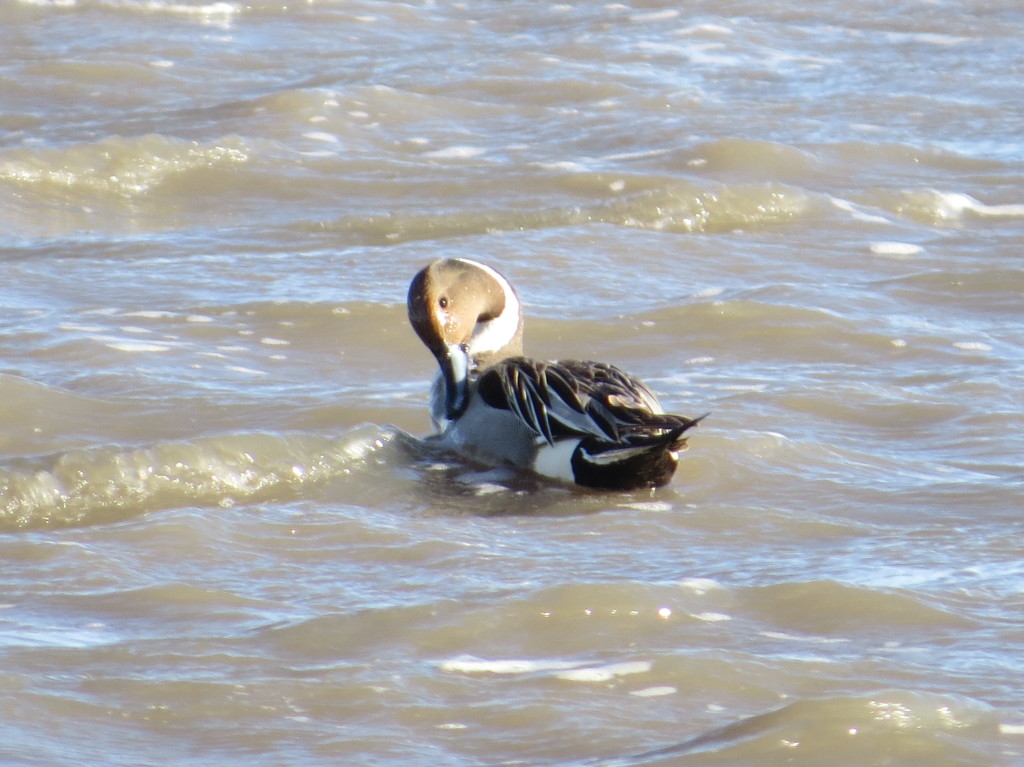
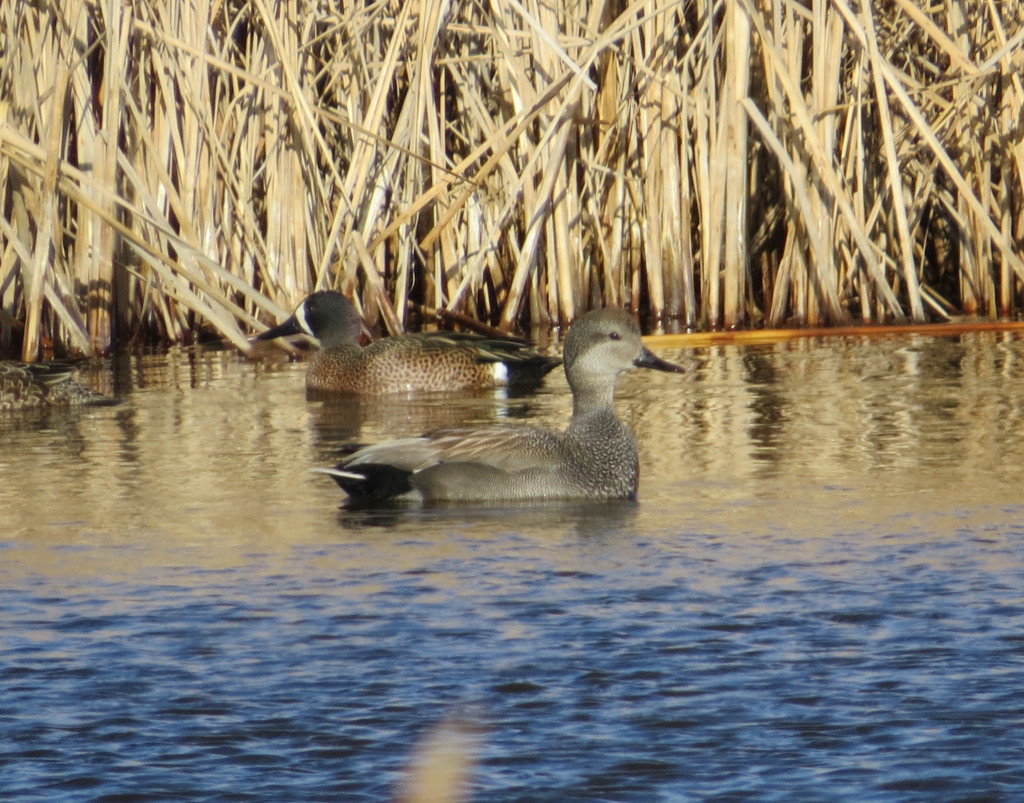
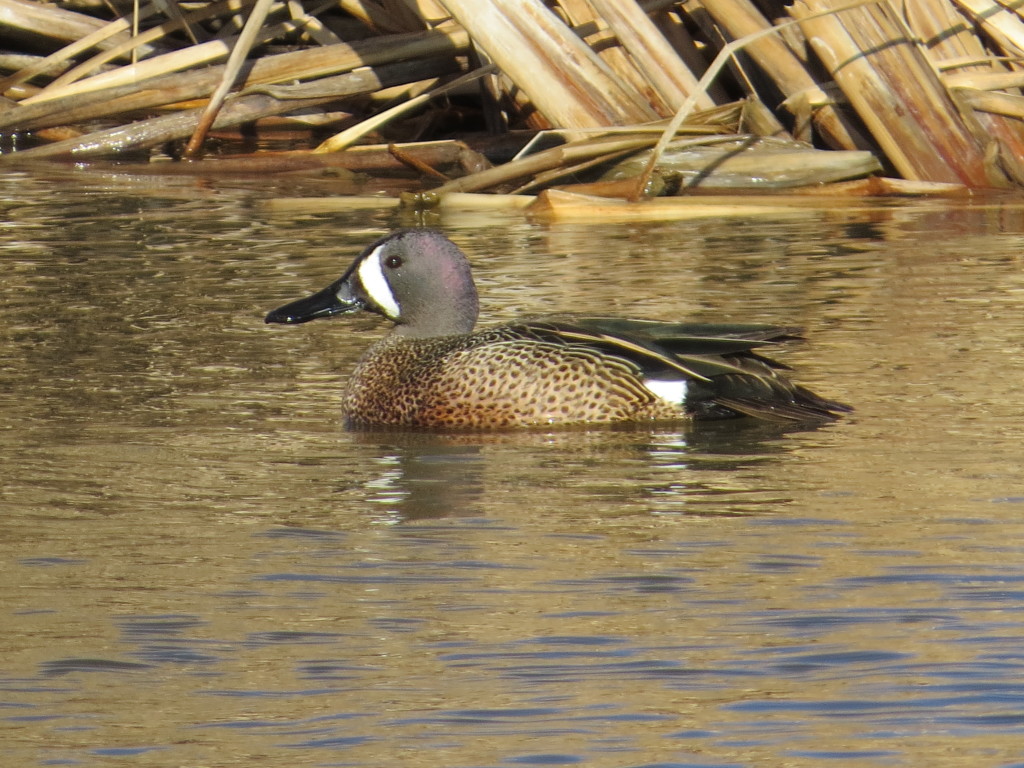

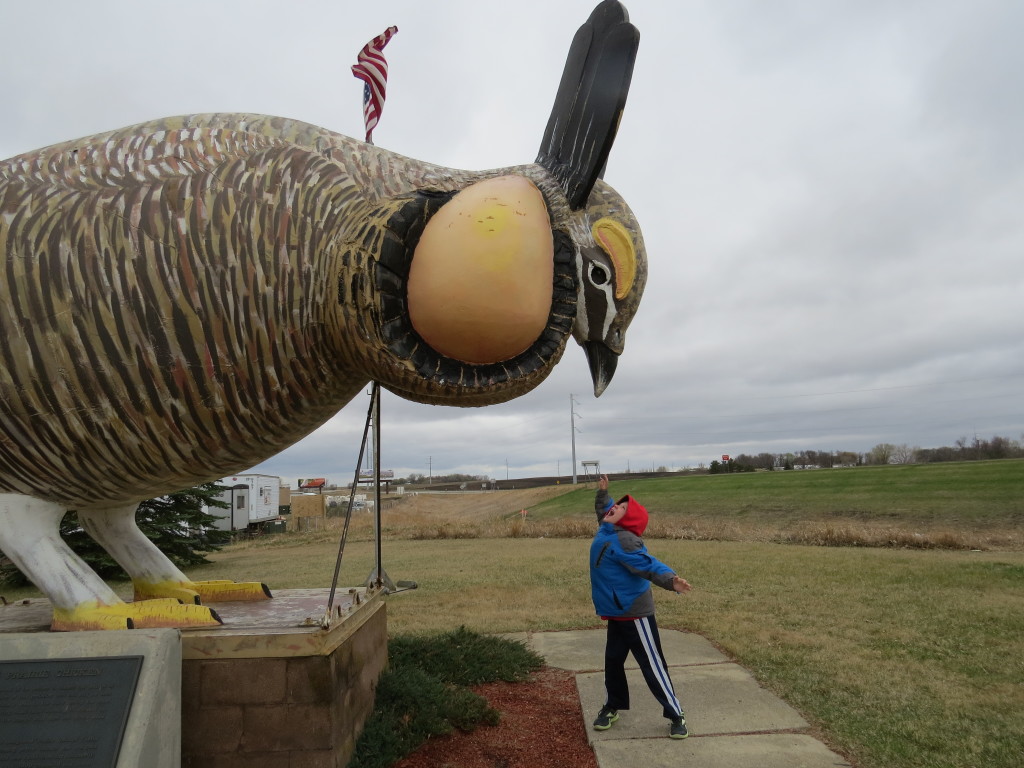 This next photo was not completely orchestrated by me. Evan really did discover the lesser end of a Greater Prairie Chicken all on his own. The smiles are 100% natural. Oh, to be 8 again.
This next photo was not completely orchestrated by me. Evan really did discover the lesser end of a Greater Prairie Chicken all on his own. The smiles are 100% natural. Oh, to be 8 again.